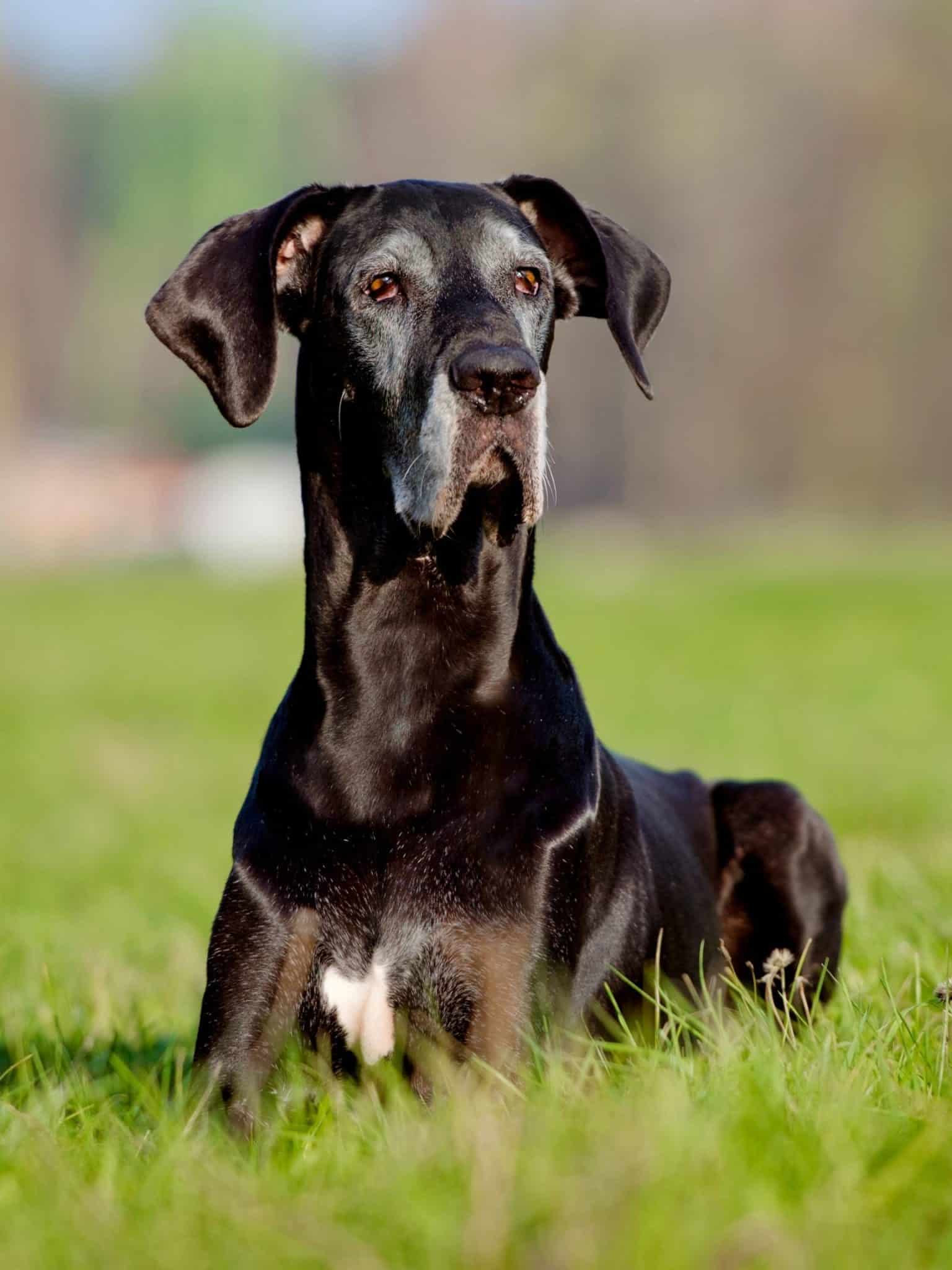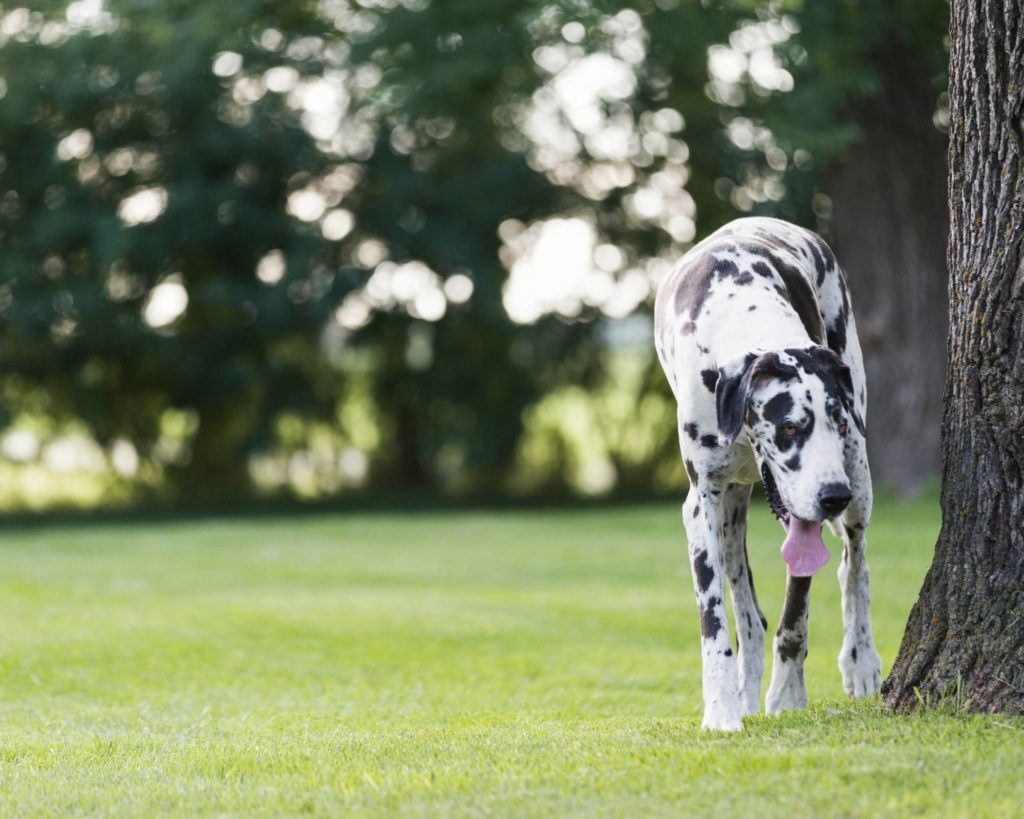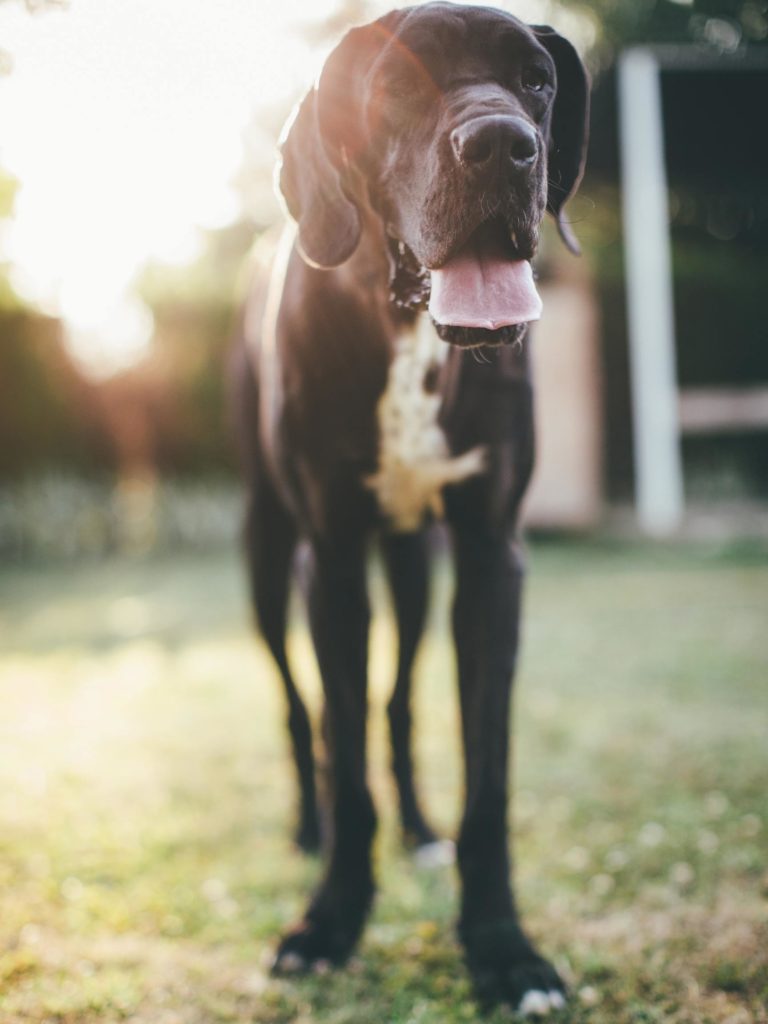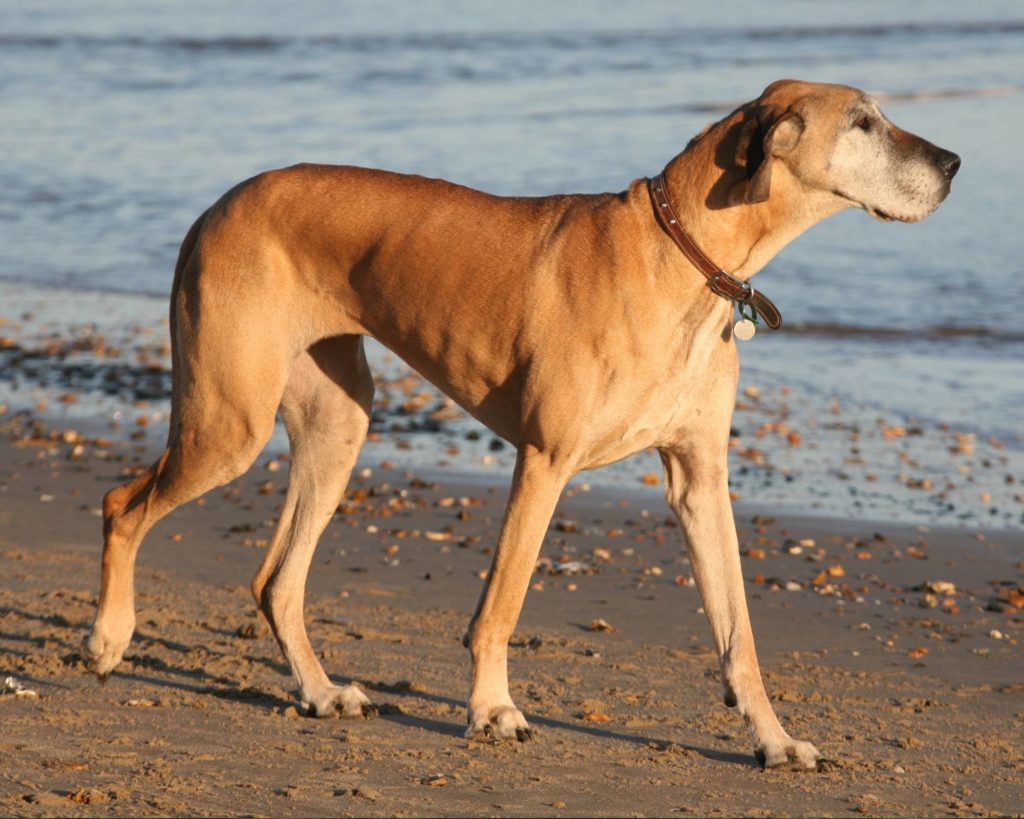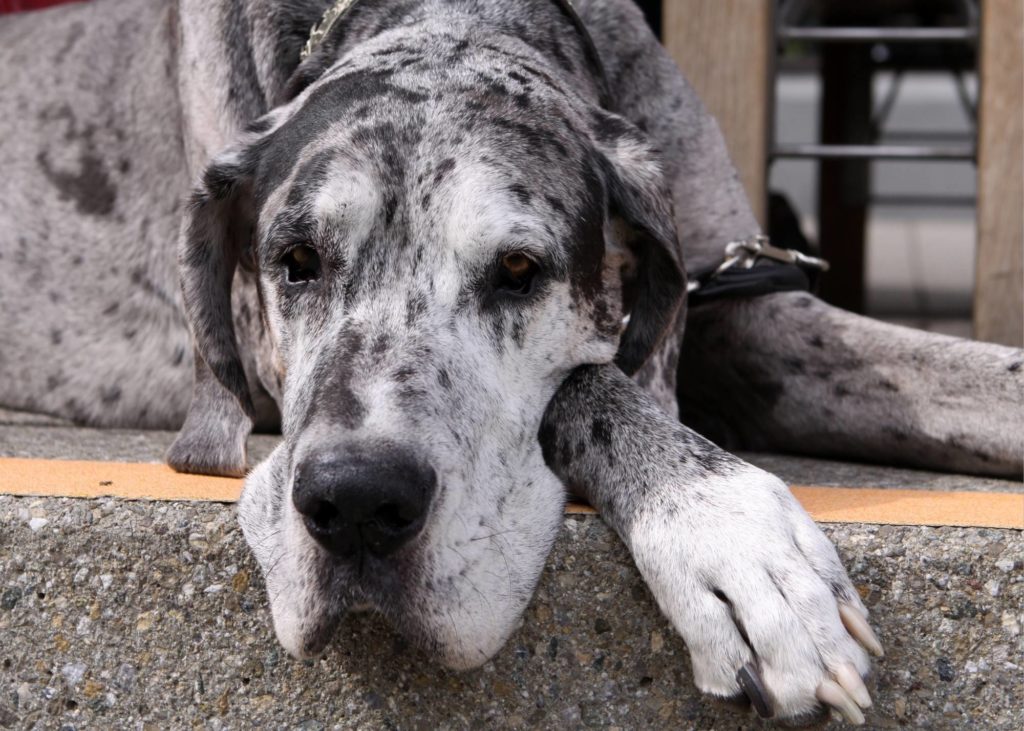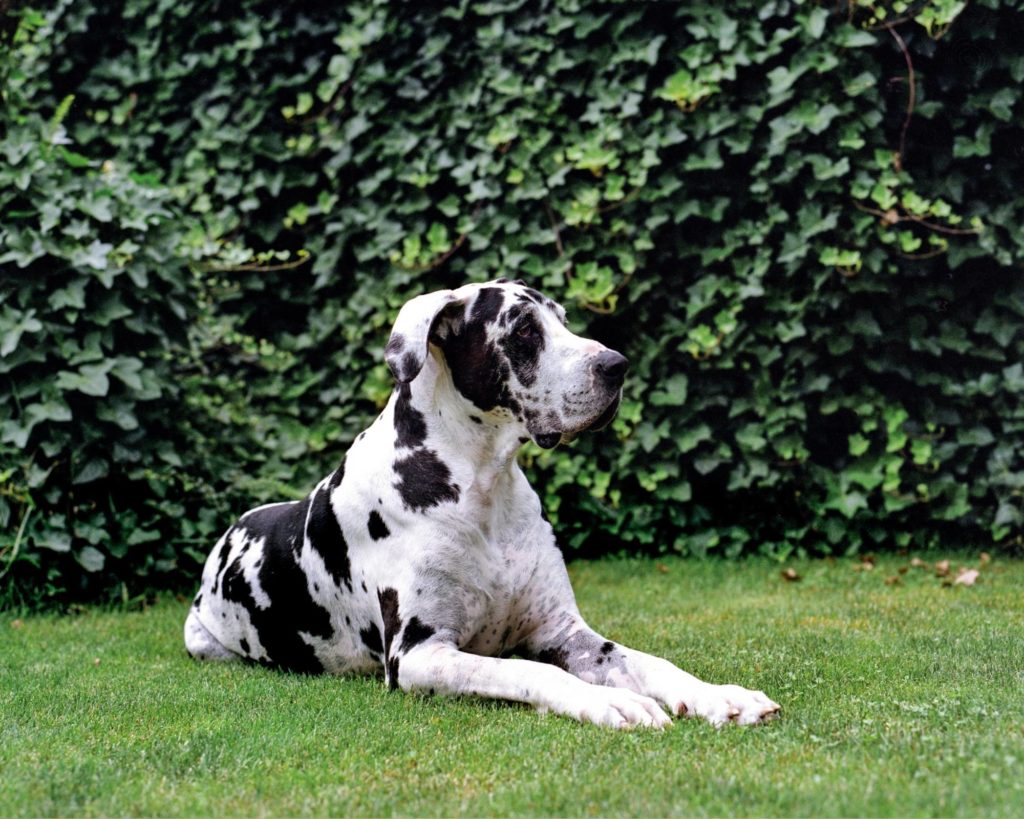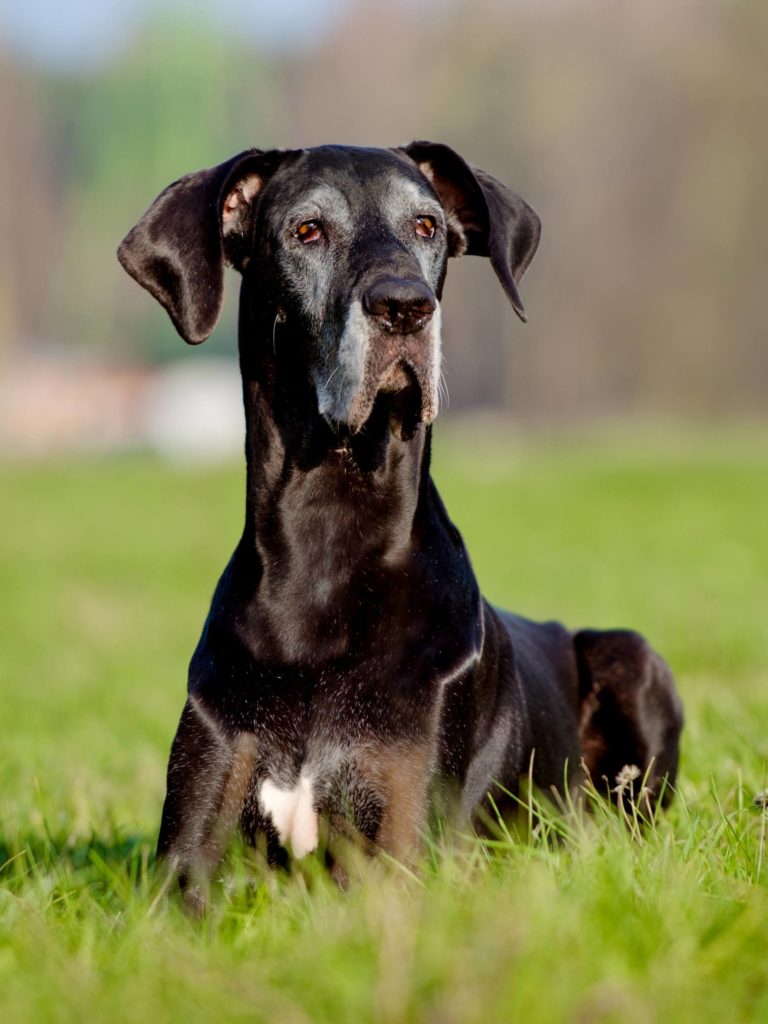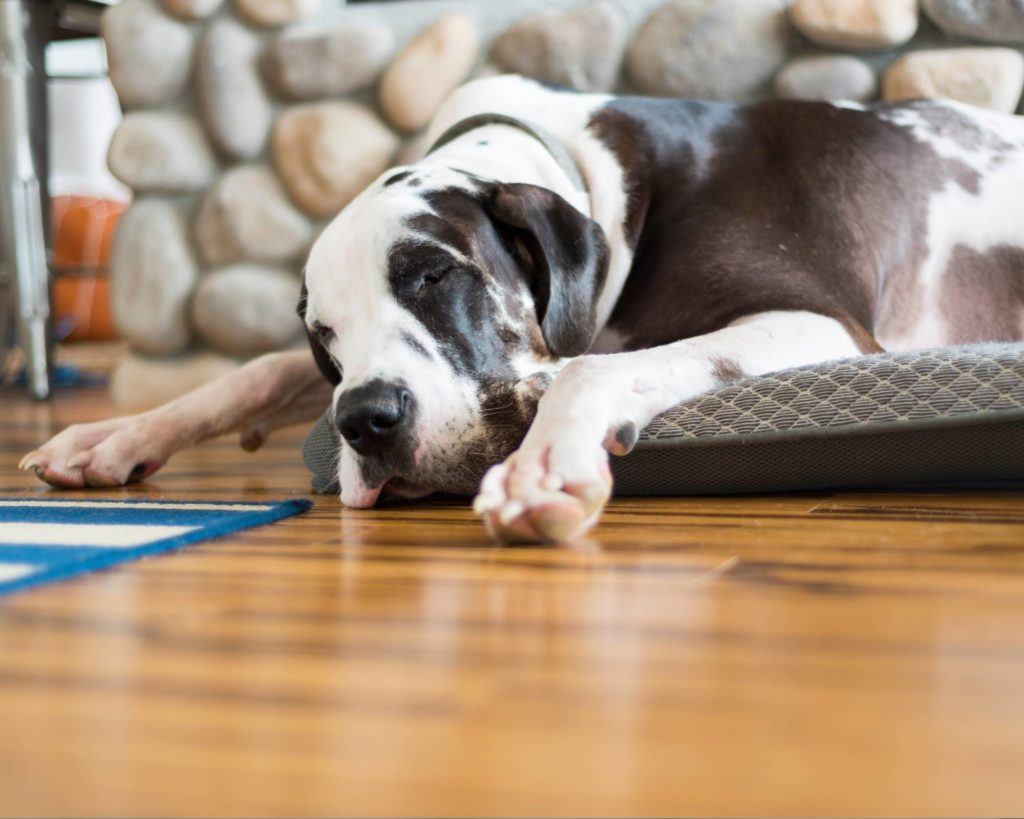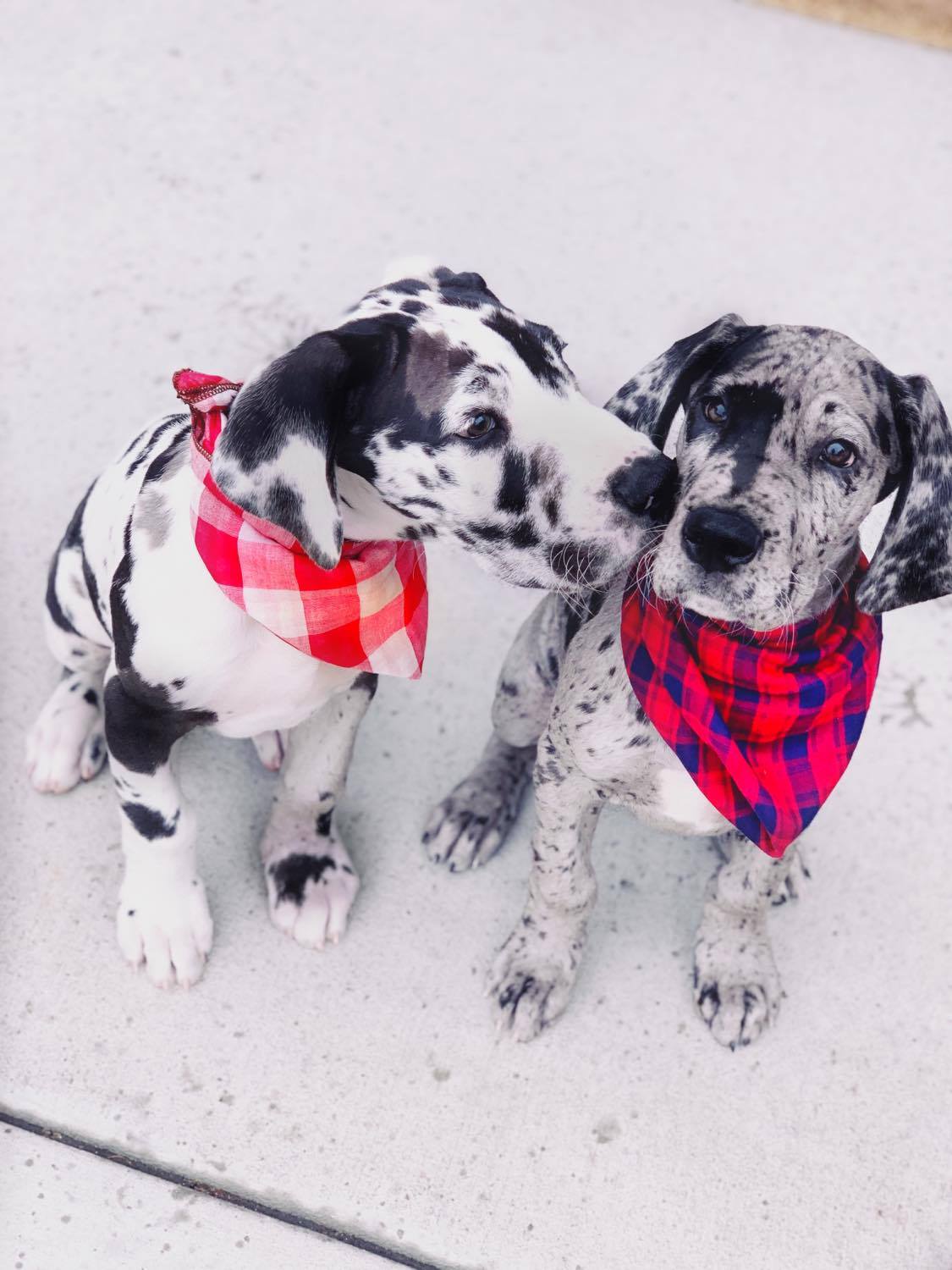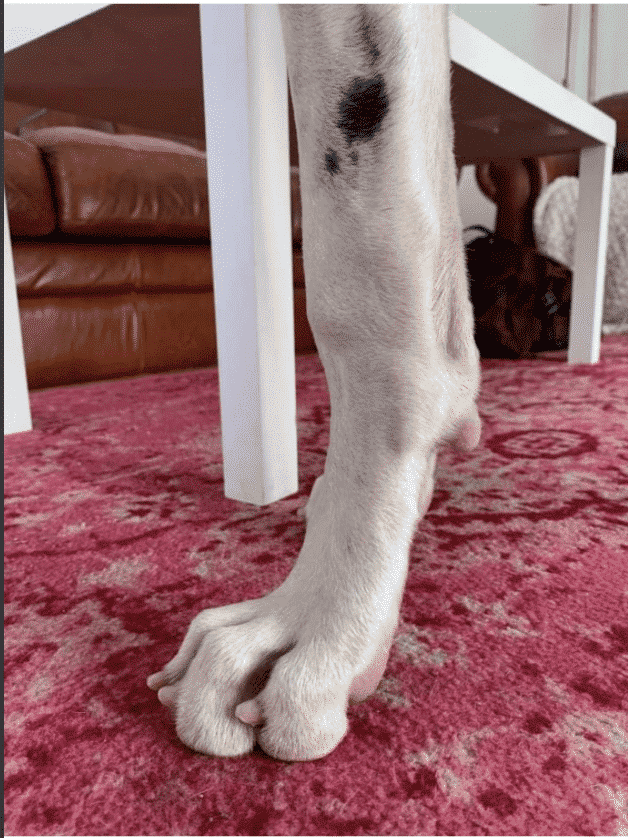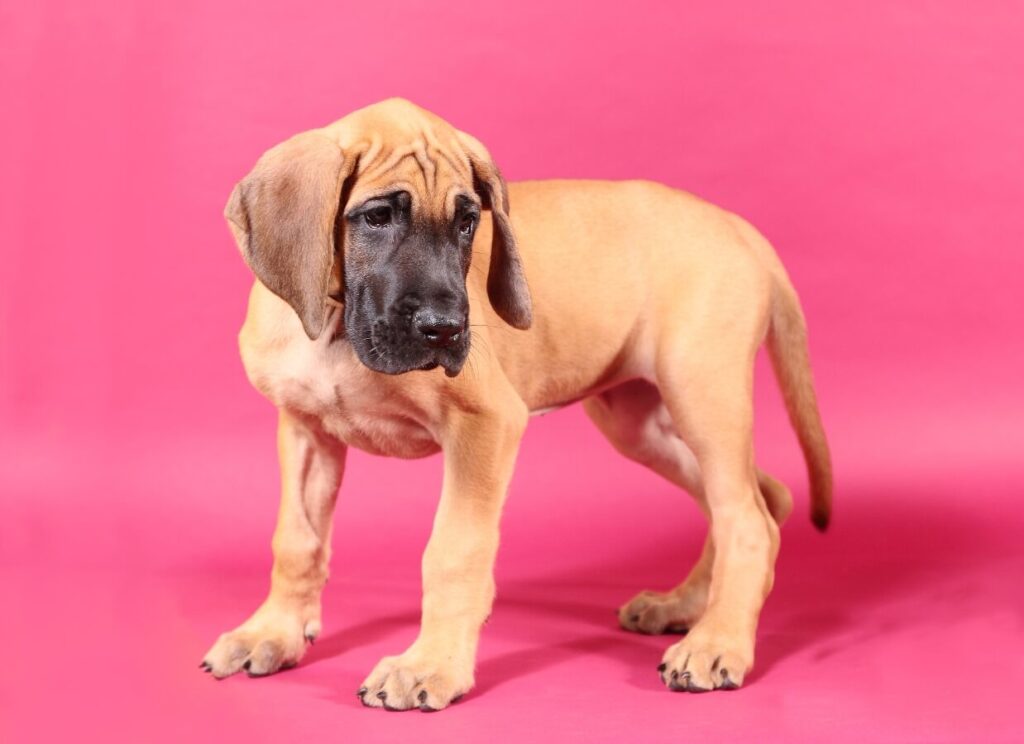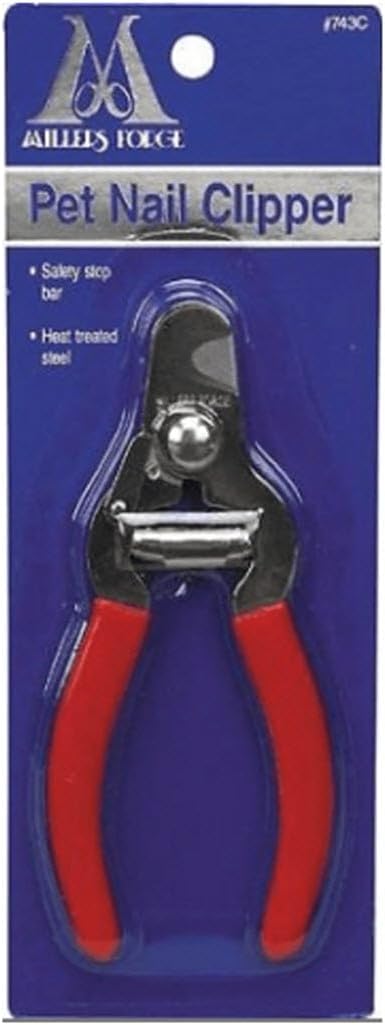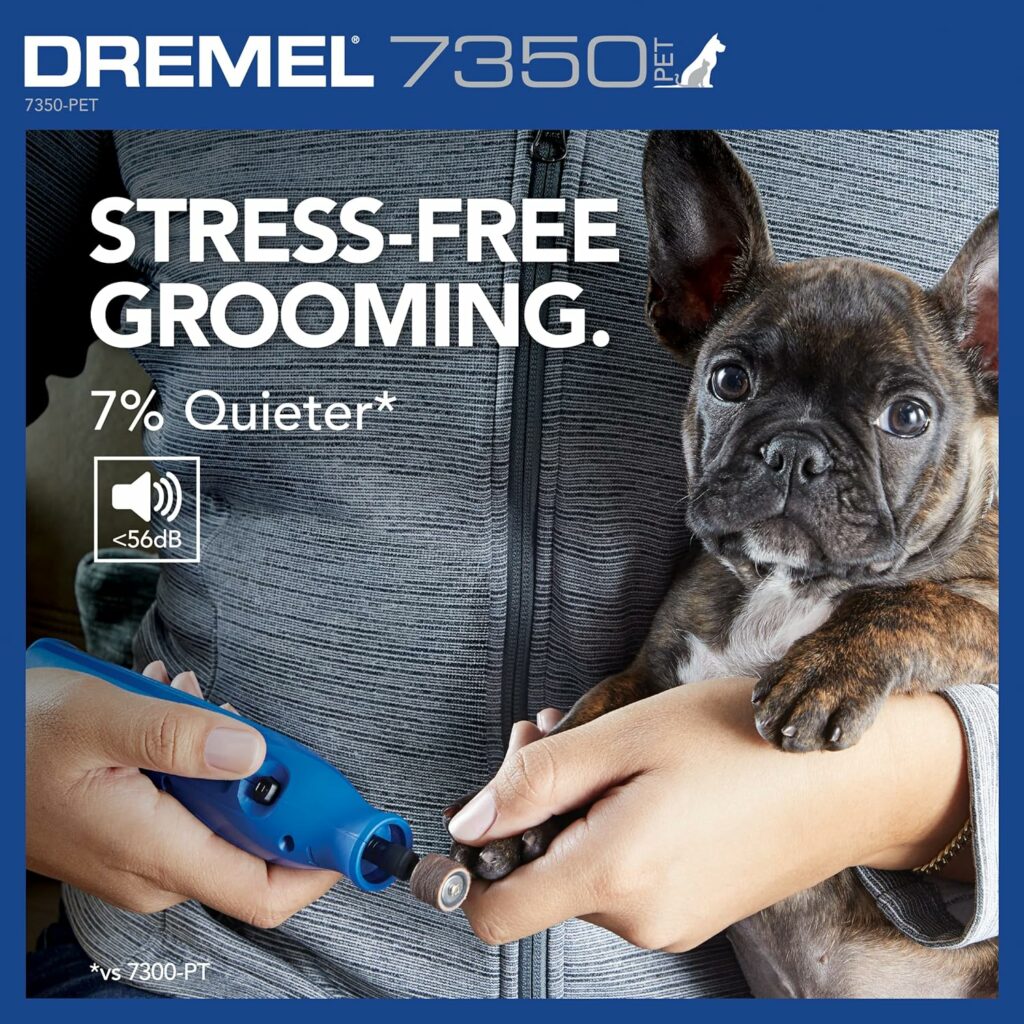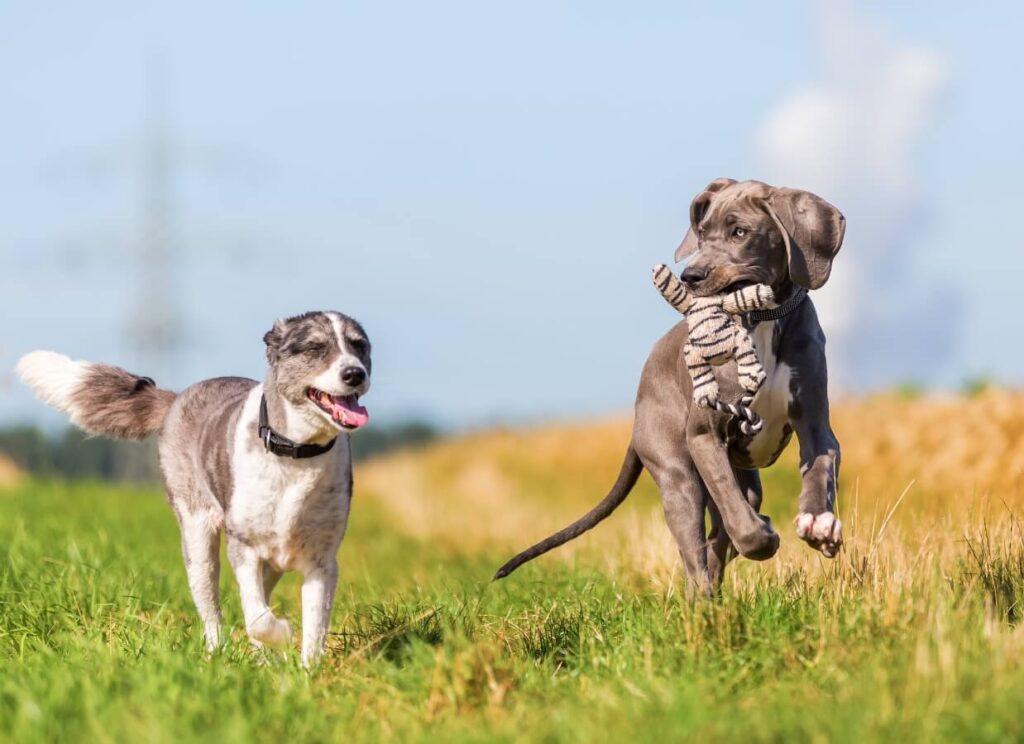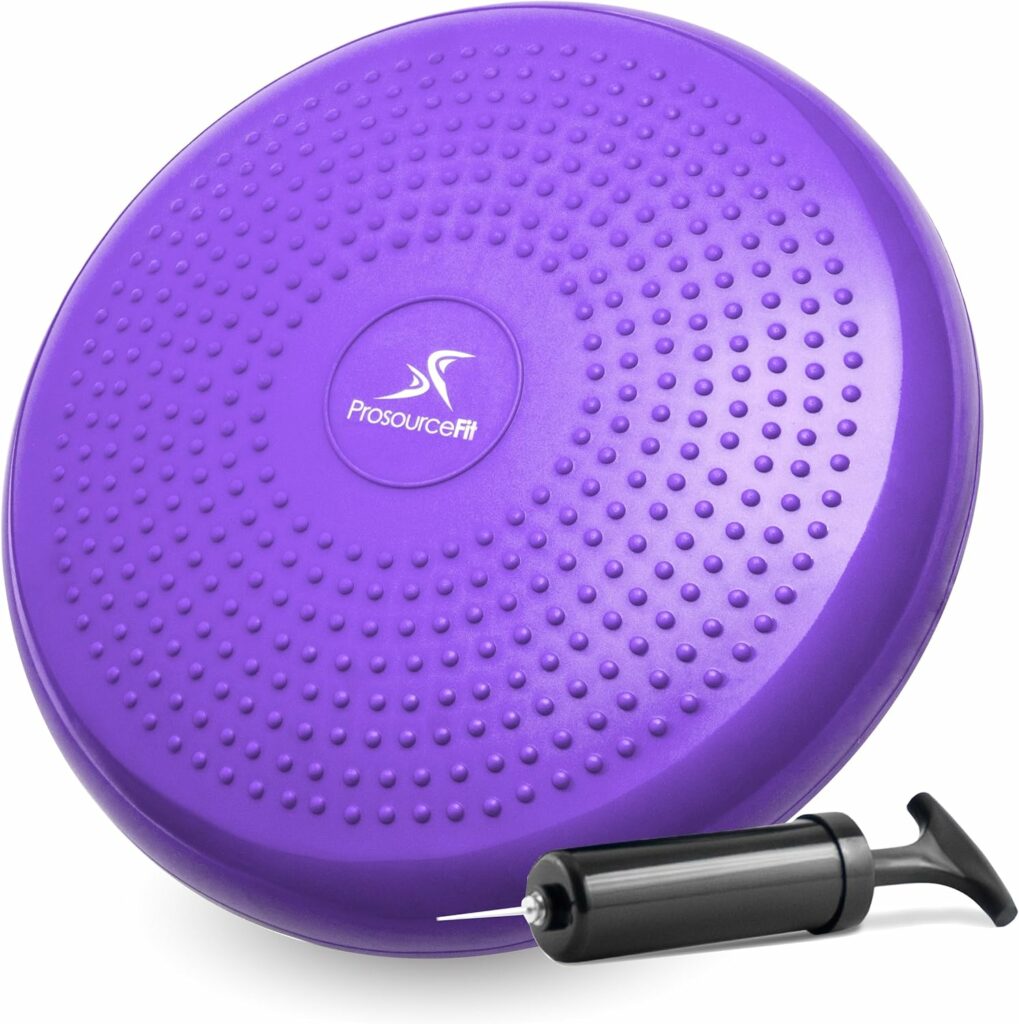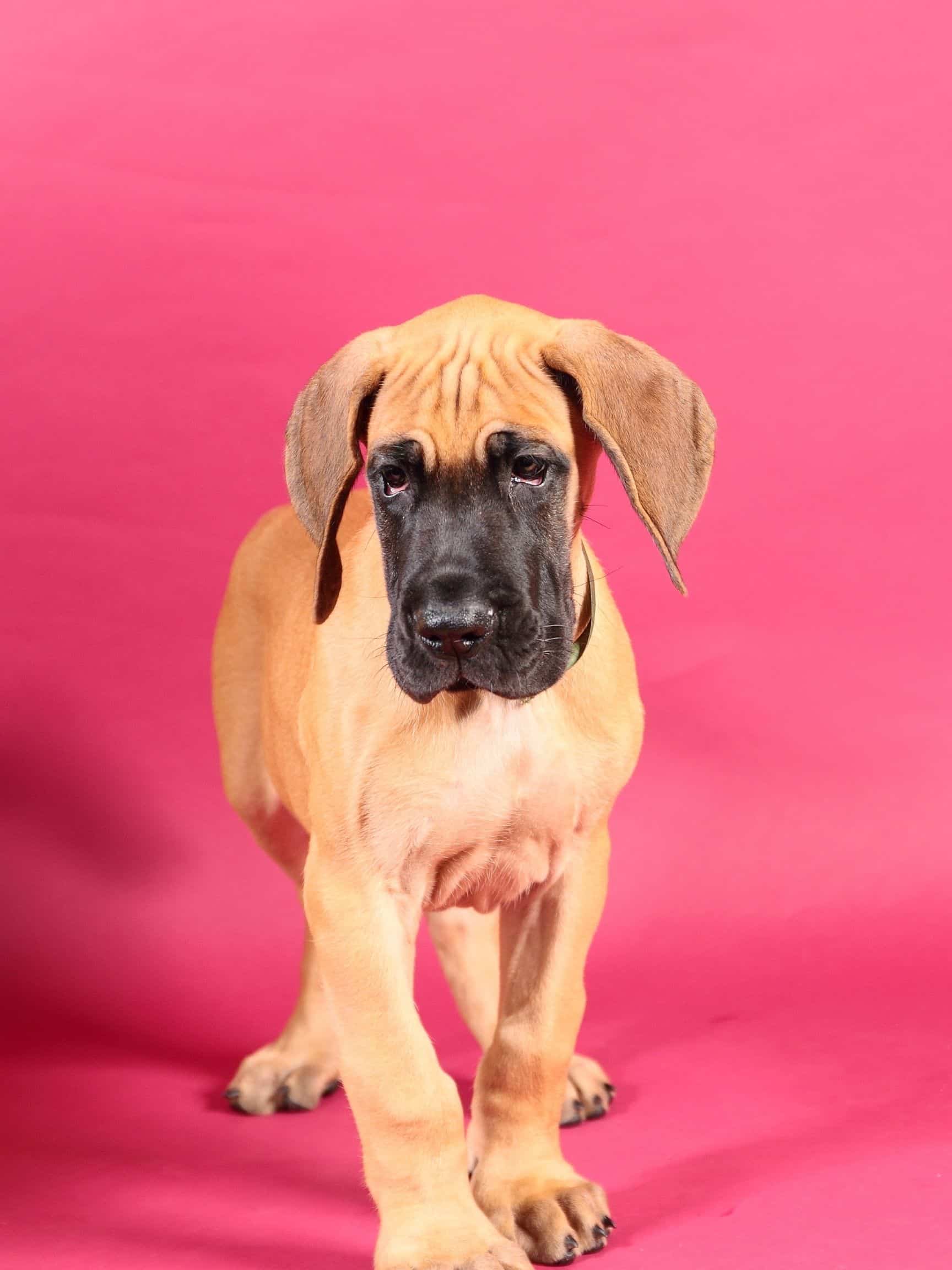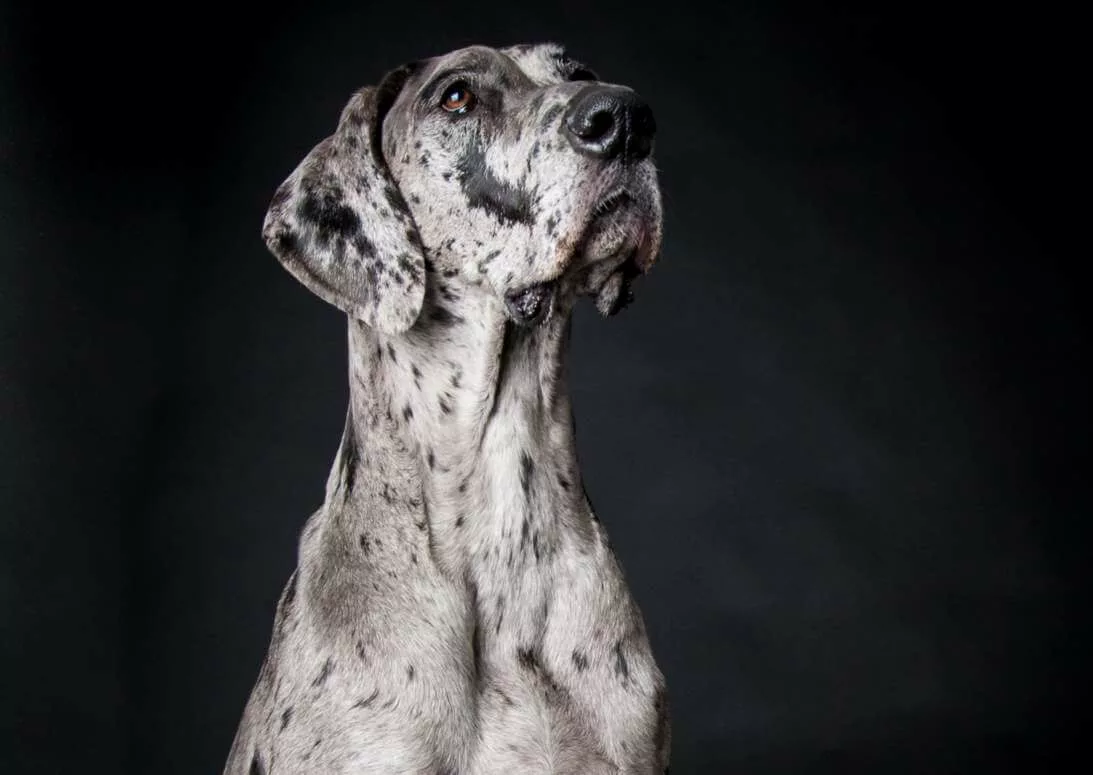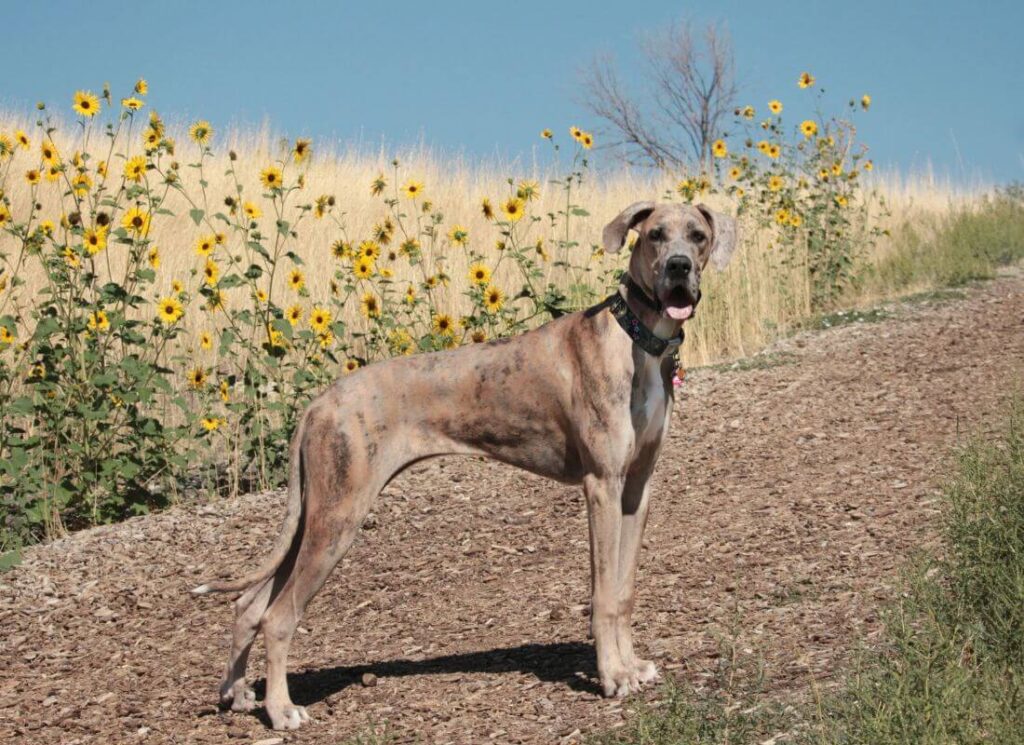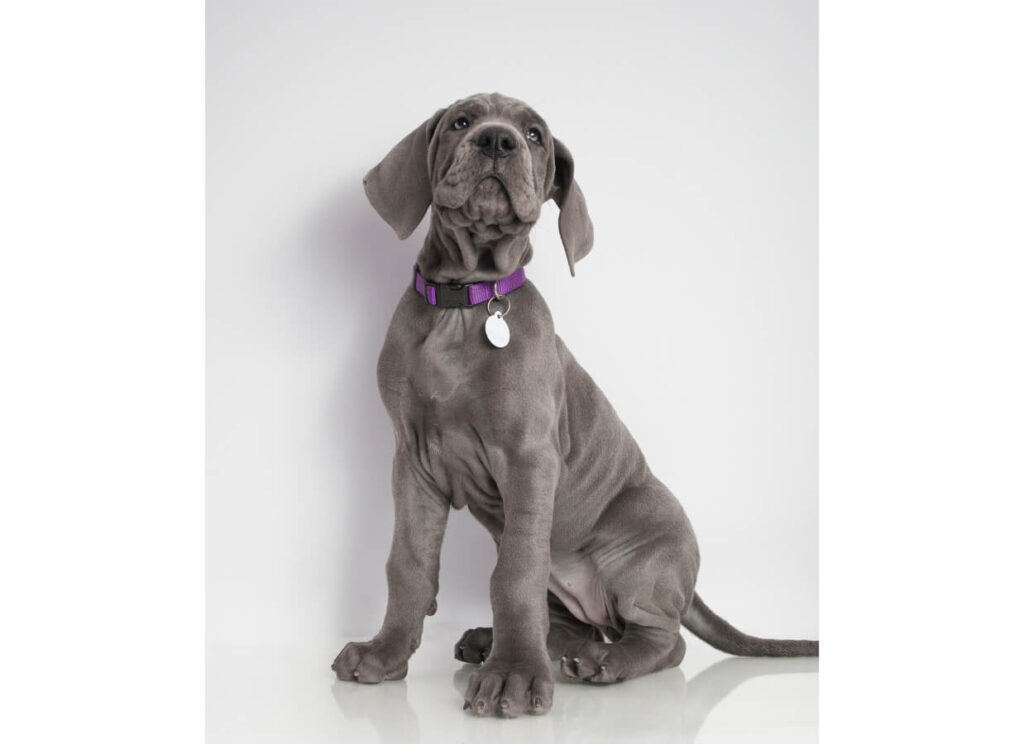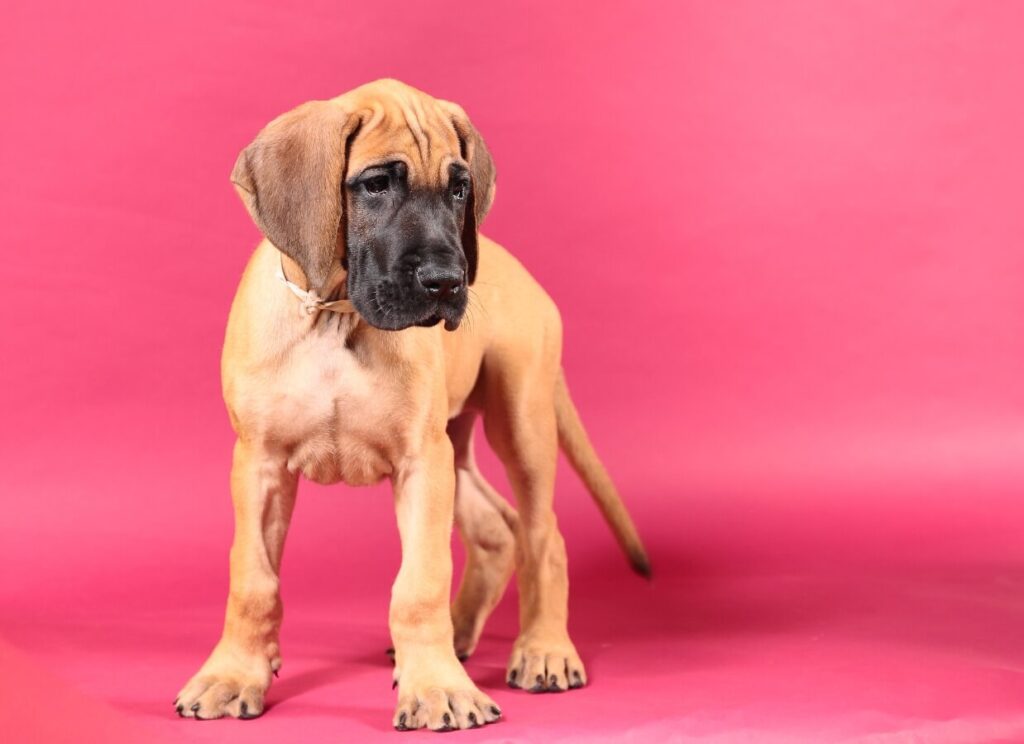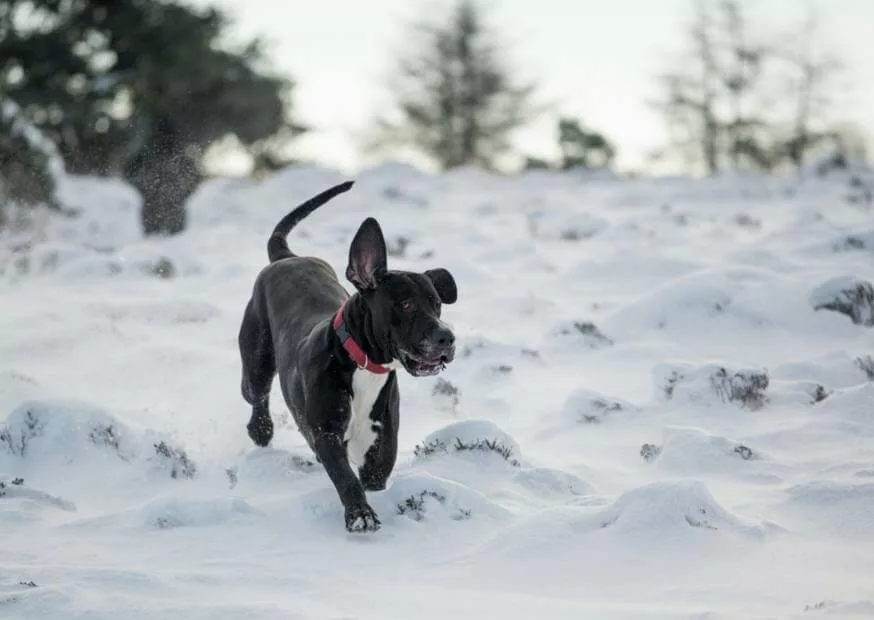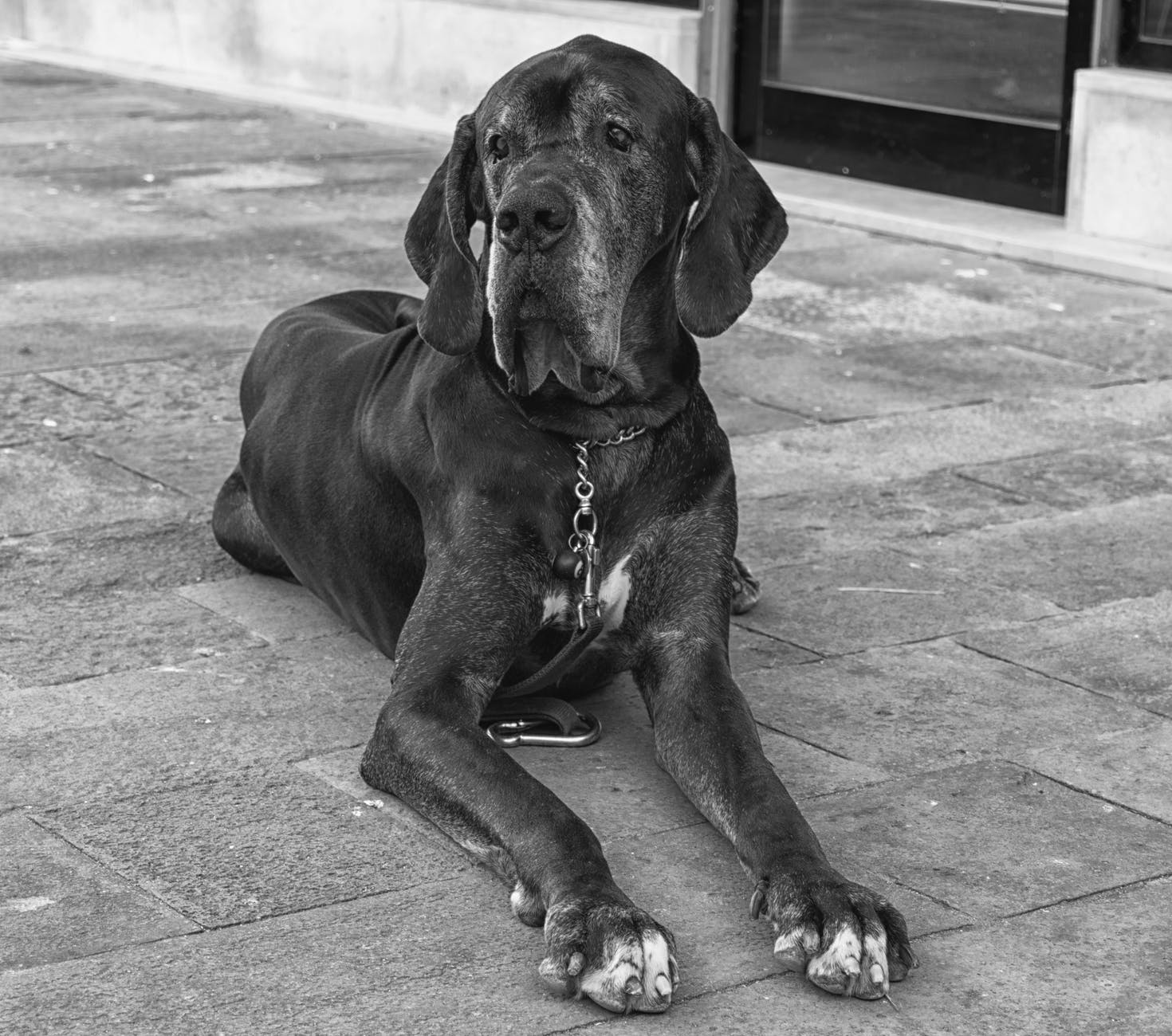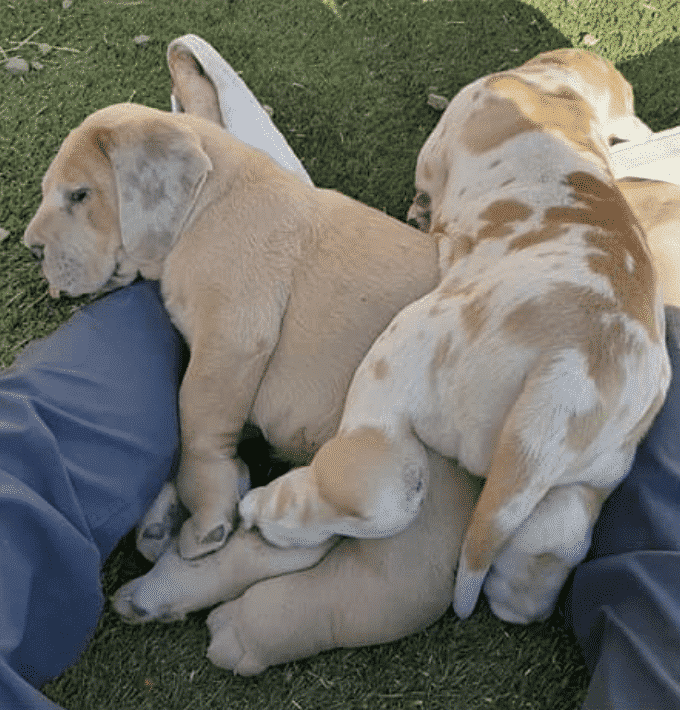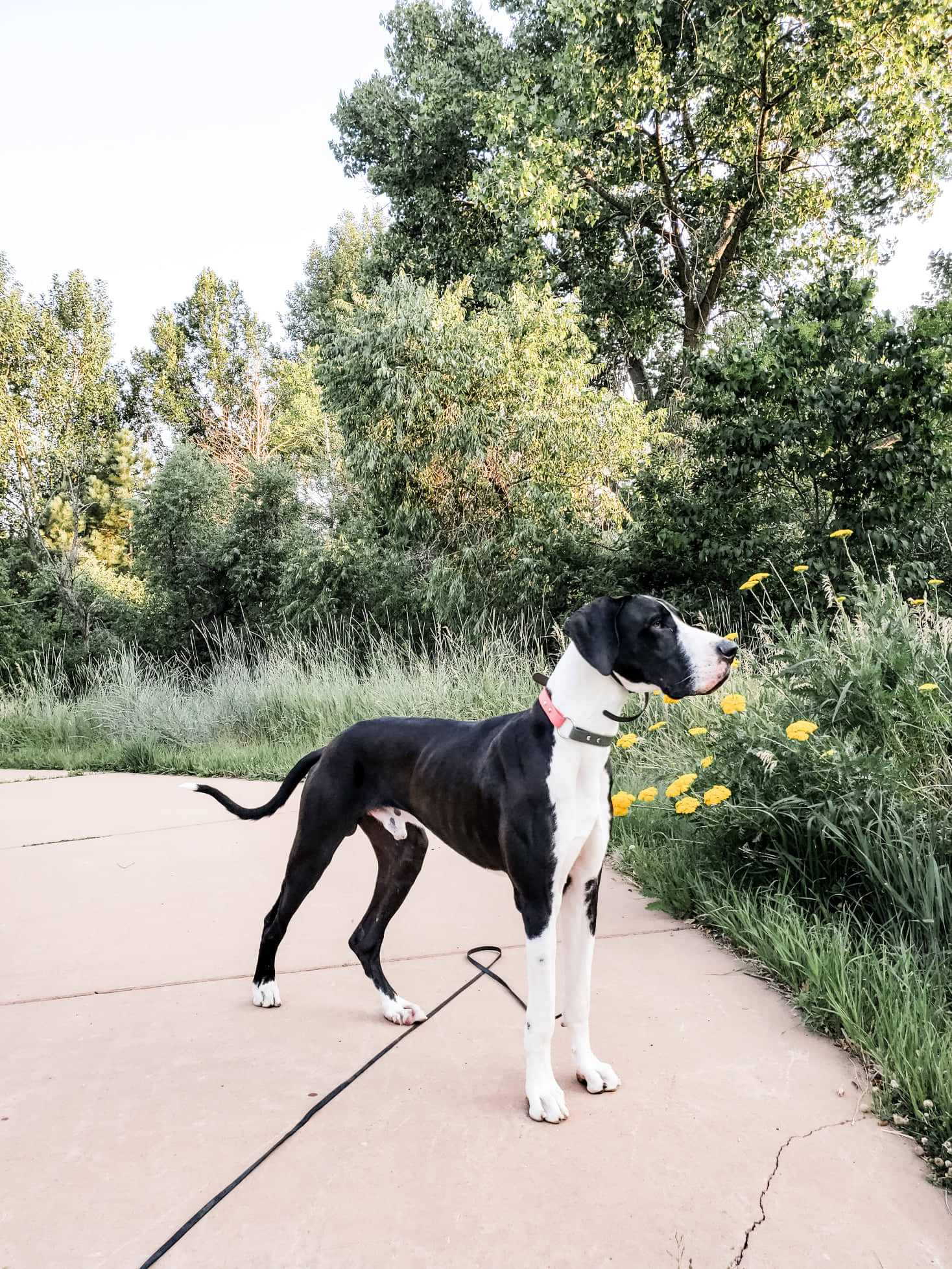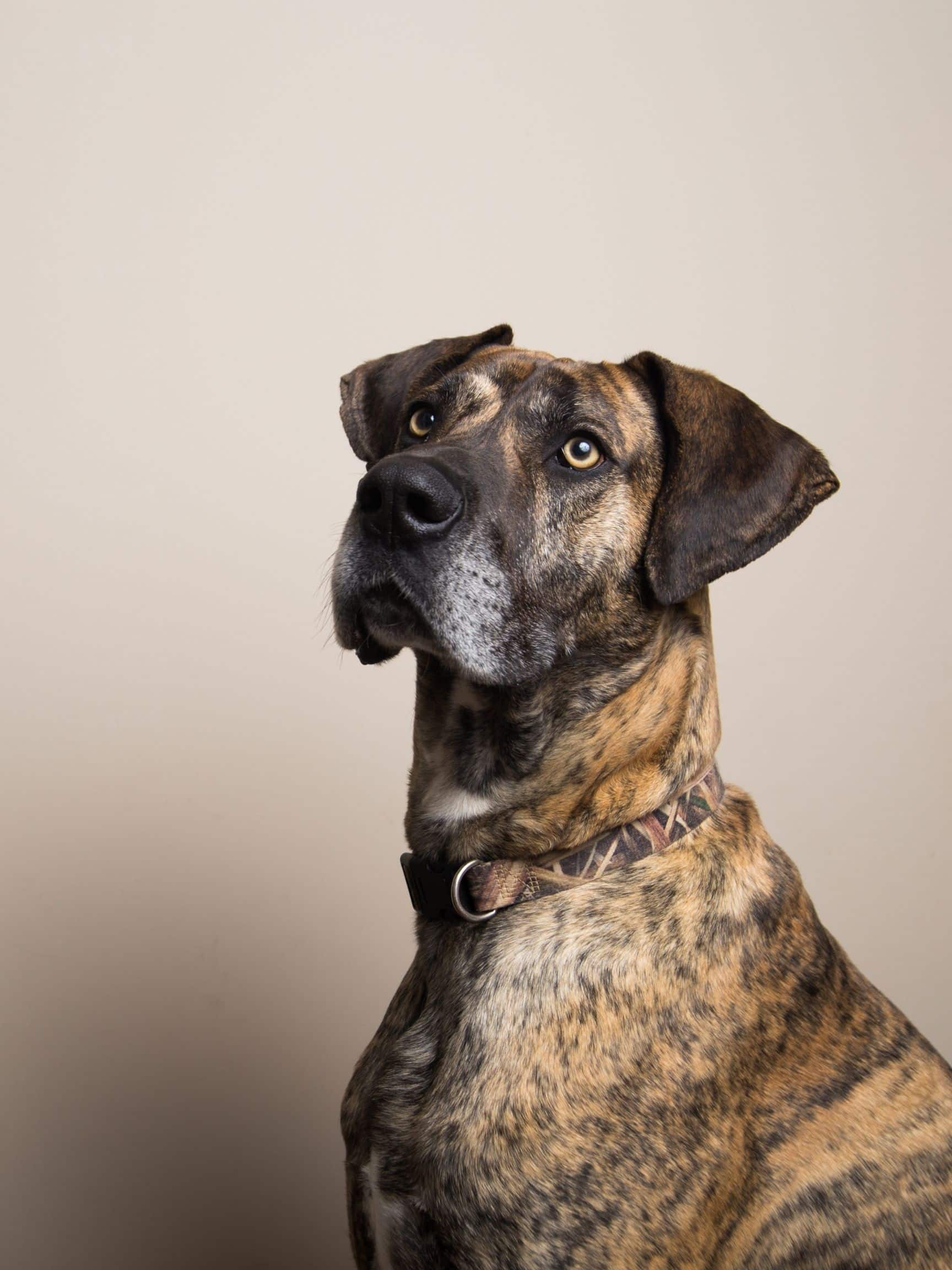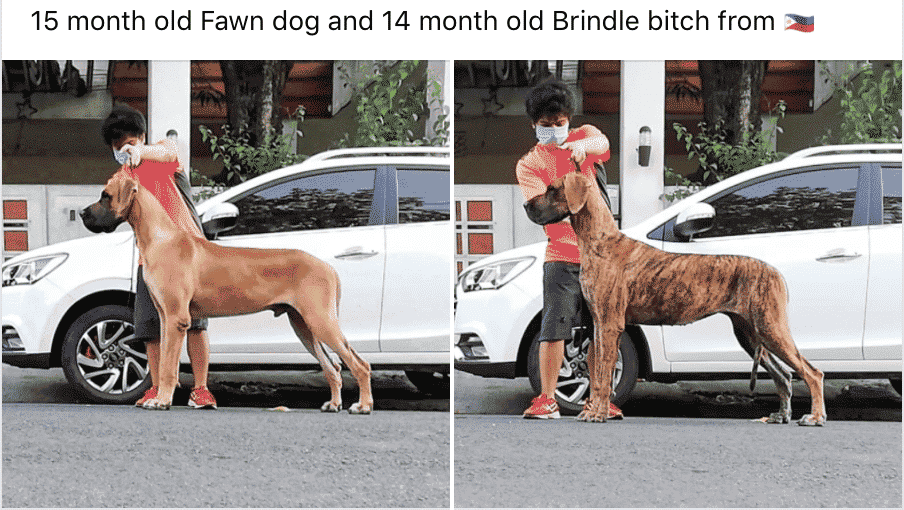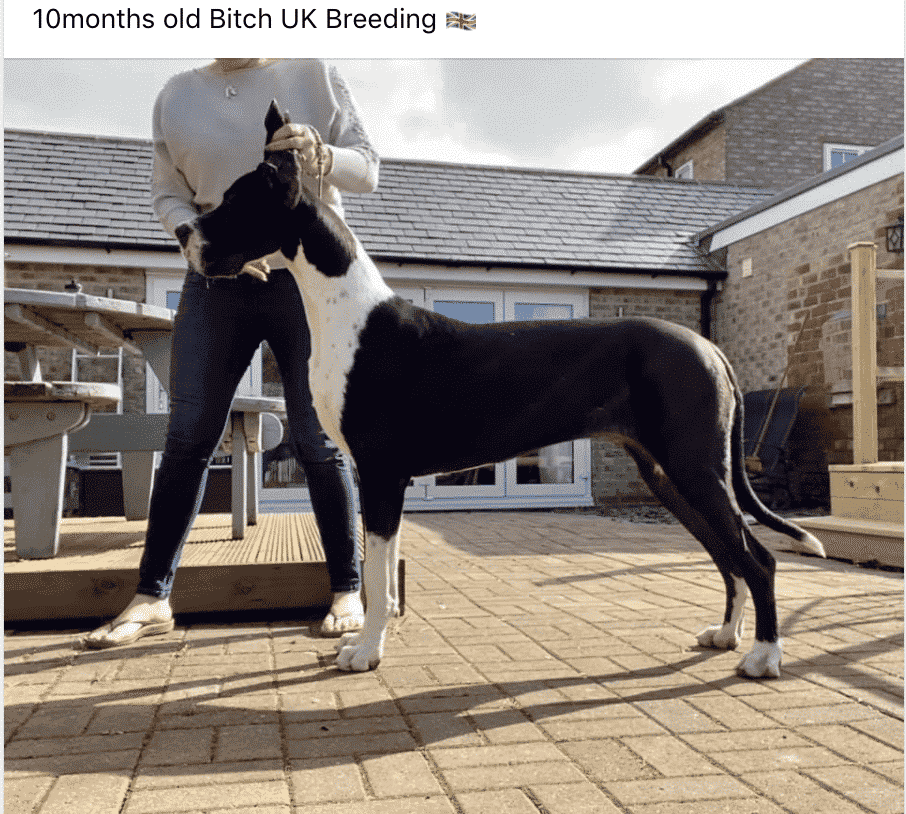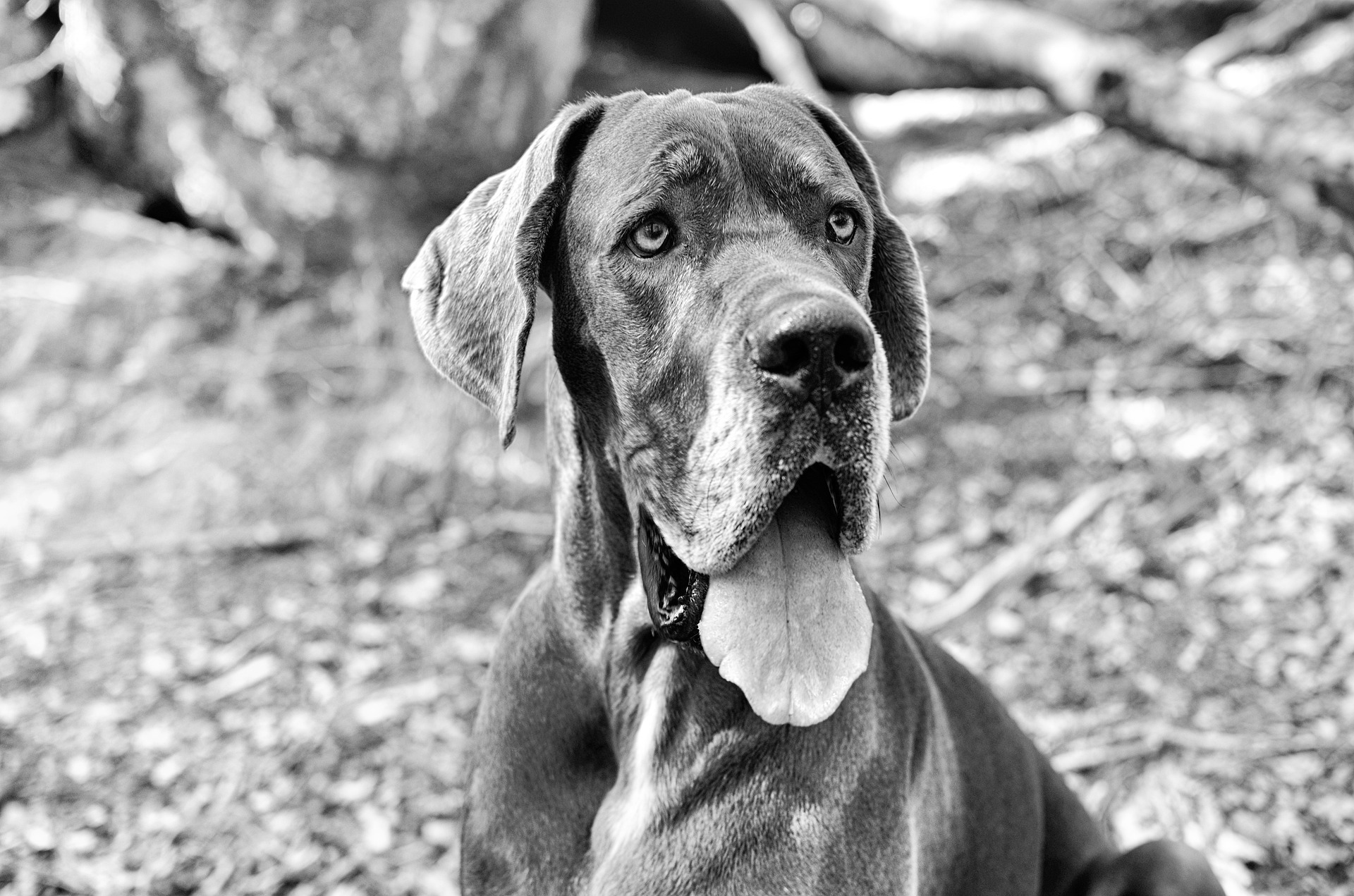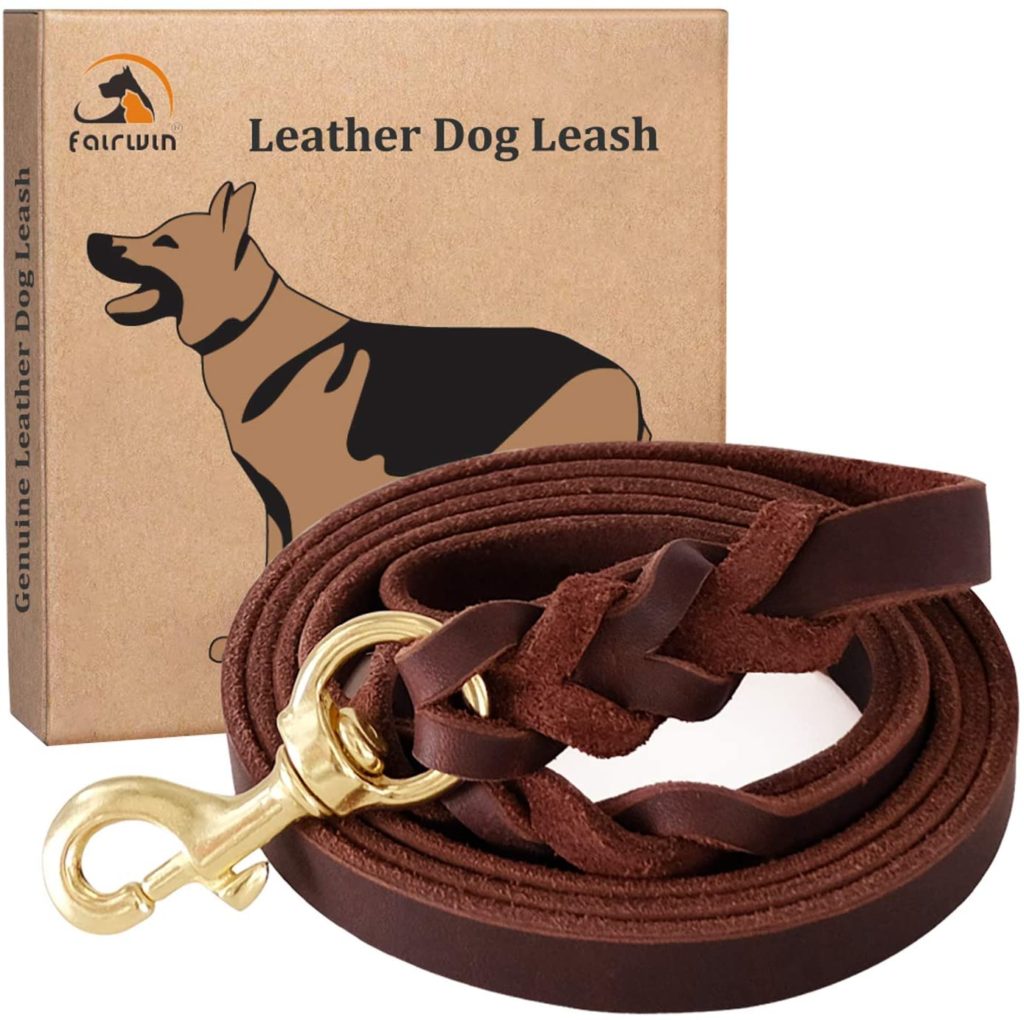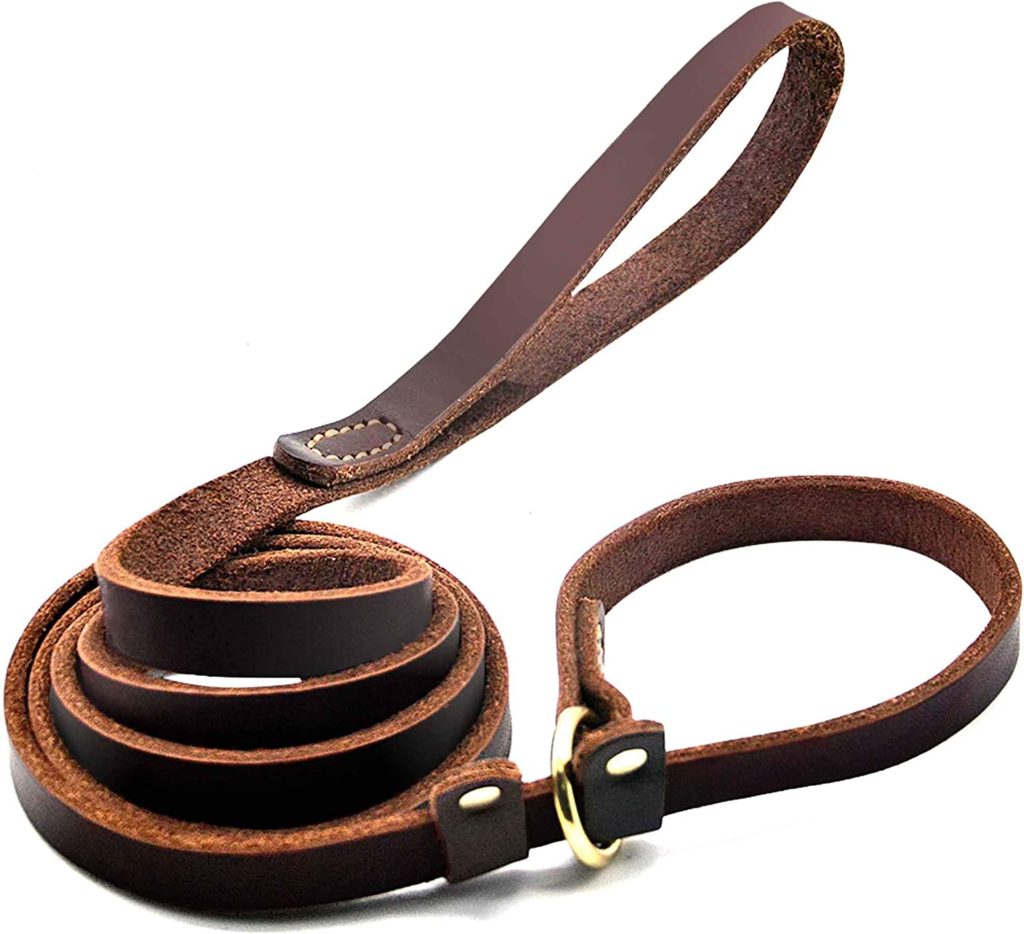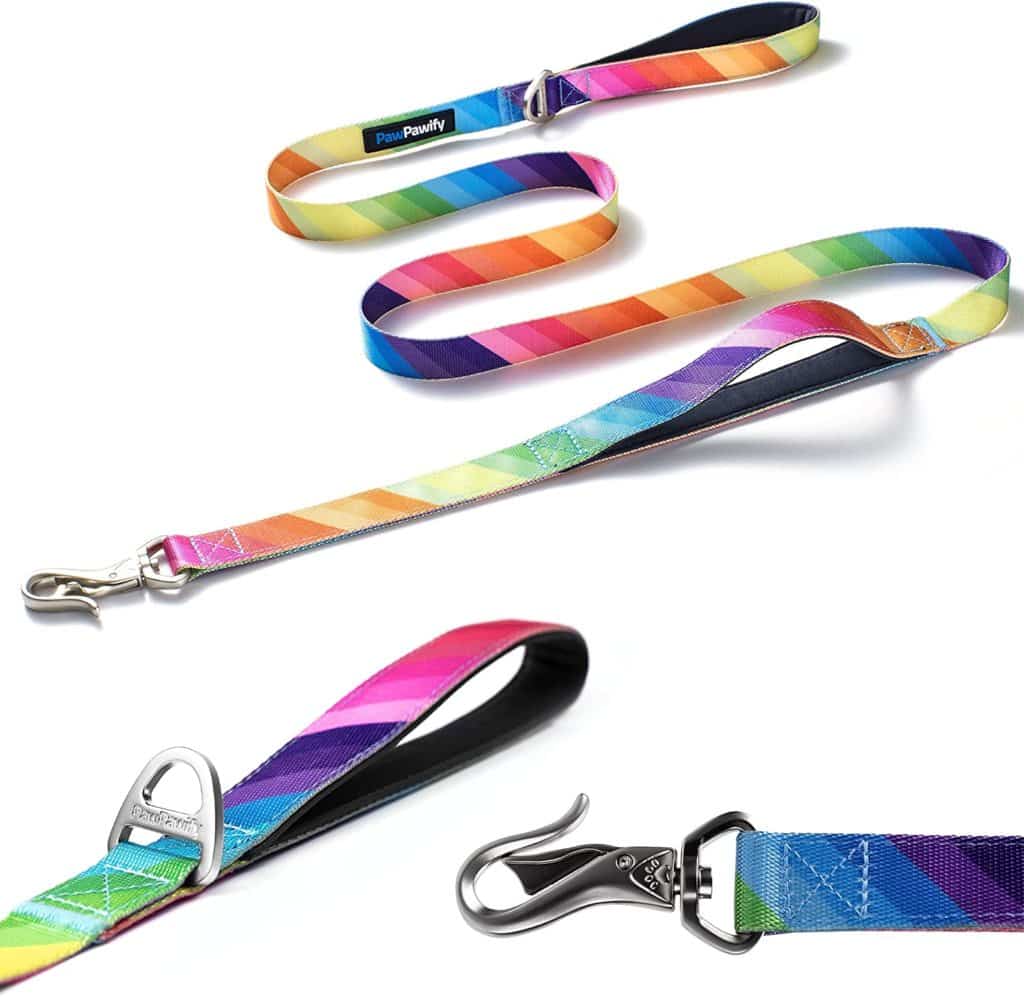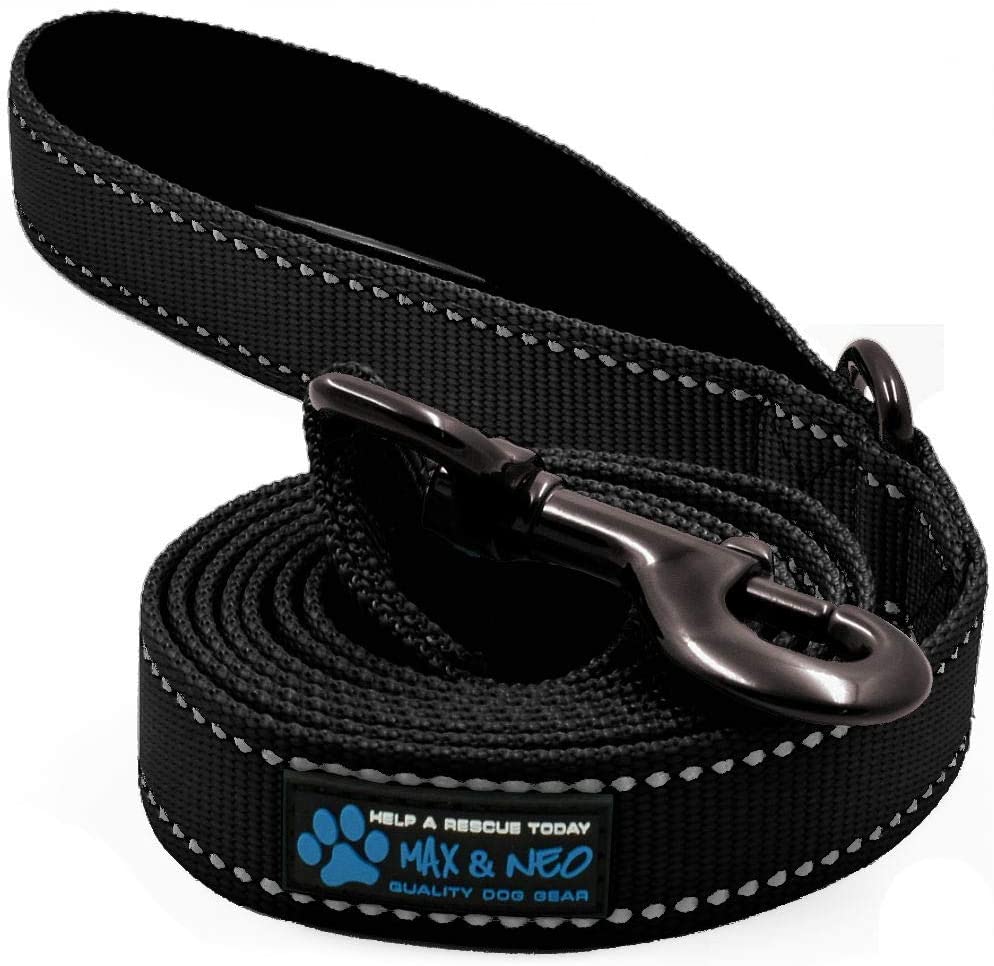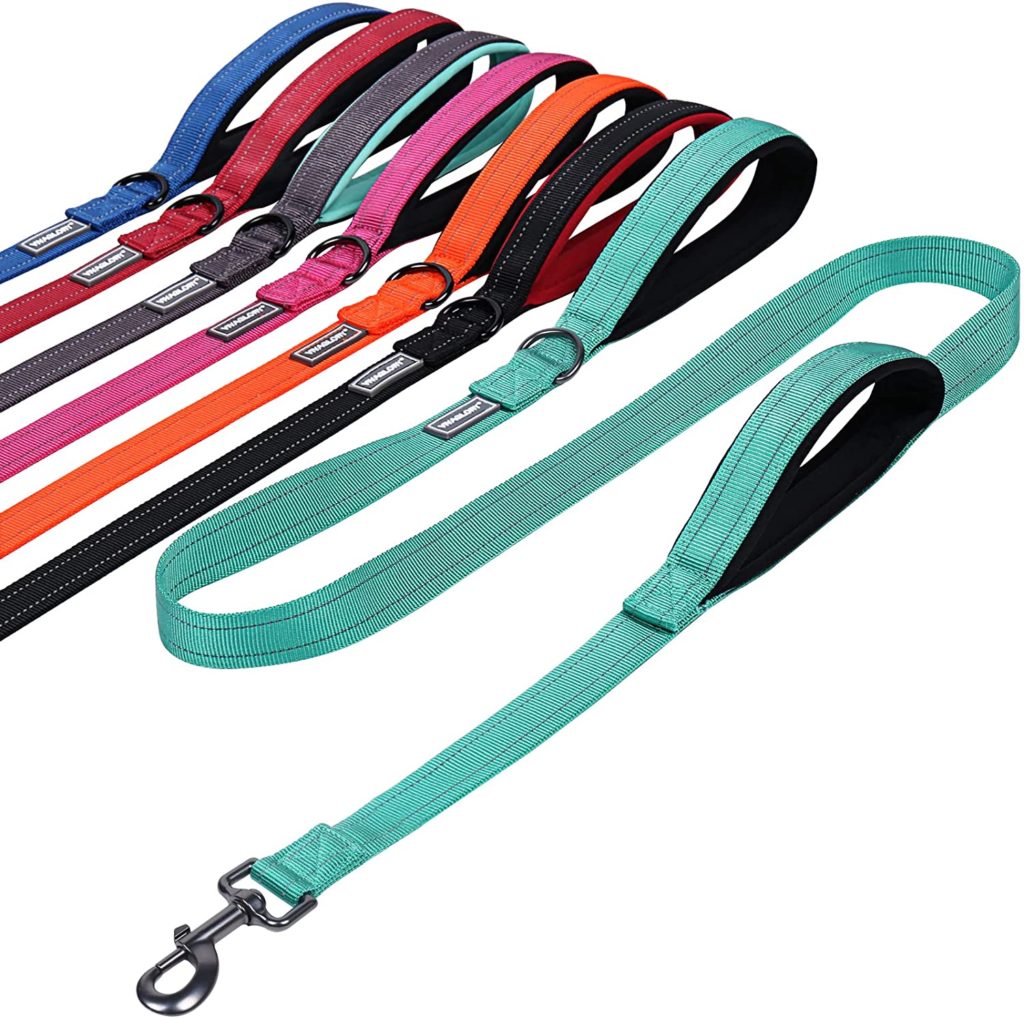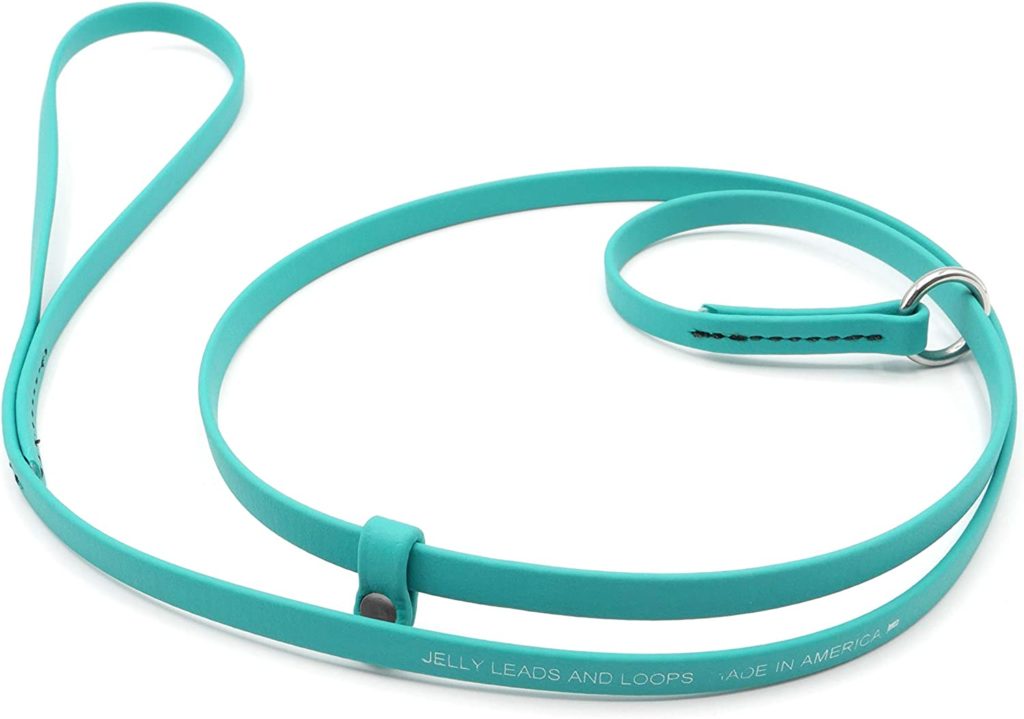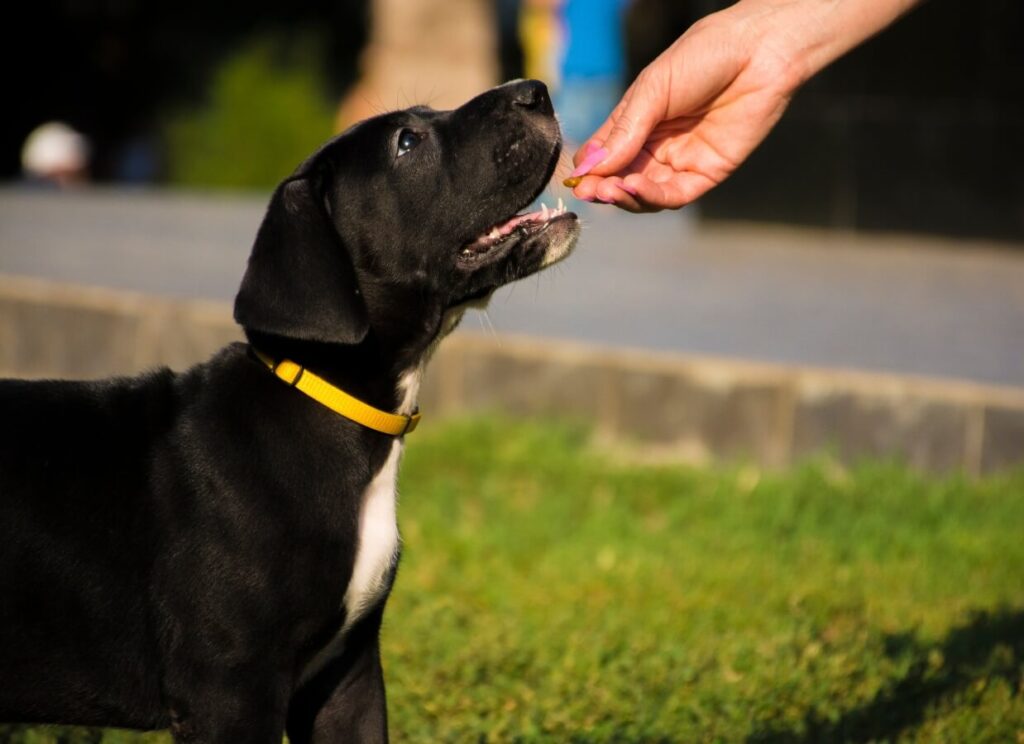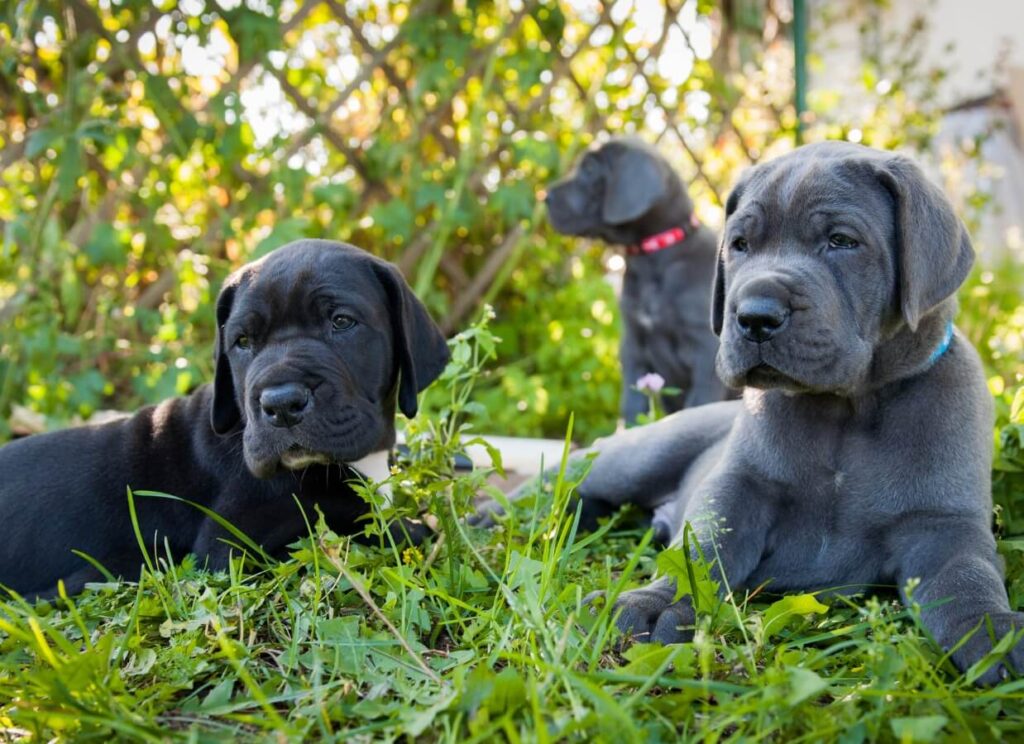Is your Great Dane growling?
Jumping?
Attacking you or the kids?
Is your Great Dane being aggressive at the dog park, or just playing?
Are Great Danes aggresive? Great dane behaviour can seem complicated, but it doesn’t have to be!
If you are trying to figure out if your Great Dane being aggressive or JUST playing, you’ve come to the right place! Are Great Danes aggressive?
This is an important blog post and one that all Great Dane owners should read and bookmark for reference
Aggression in Great Danes is no joke. They are giant dogs that can easily hurt a human or animal, so it’s important to have a great understanding of behavior when talking about healthy play vs. rude behavior vs. aggression.
If the Great Dane behavior problems you are seeing is actually aggression, please seek professional help from a highly qualified balanced trainer that uses a lot of positive reinforcement. Reality television is not a good place to get your dog training information!

GREAT DANE PUPPY AGGRESSION AND HEALTHY PLAY
Puppies growl, pounce, lunge, bite, tug, bark and generally act immature.
99.9% of the time, this is completely normal!
Even if they are chasing and ‘attacking’ kids, even if they grab your hand and growl and shake it, even if they are constantly biting you, even if they lunge at your face. That doesn’t make it ok, but it is an expected puppy behavior that is resolved with management, training and maturity.
Puppies are immature and these kinds of things are a fun game for them. They are learning how to control their jaws and bite strength, and learning what kind of behaviors result in attention.
Why does my Great Dane puppy growl at me?
Chasing is fun. Biting is fun. Lunging is fun! As puppy owners, we often encourage this behavior by shouting, squealing and getting frustrated or scared. Learn more about puppy biting and how to control it here.
It is rare for puppies to be truly aggressive.
If you suspect, after reading more of the information below that your puppy is being aggressive and not playing, you need to seek professional help from a highly-qualified positive-balanced trainer immediately.
Contrary to popular belief, Great Danes are not supposed to be aggressive, timid, fearful or scared.
Contact your breeder or rescue if you are seeing truly aggressive behaviors, especially in Great Dane puppies under 6 months of age.
Most ‘Great Dane puppy aggression’ is just wound-up, out of control normal puppy play. It’s time to get to training! Basic obedience, puppy playgrounds, naps, appropriate chews, mental enrichment, structure/routine and management (use a leash, crates and gates) can really help with those annoying puppy teeth.

ADULT GREAT DANES – WHY IS MY GREAT DANE BECOMING AGGRESSIVE?
Dogs are like humans; many may never love or enjoy interacting with other dogs and that is ok.
However, dogs that come from ethical breeders and that are well socialized from birth on are more likely to have healthy play signals and stable temperaments. These dogs will be able to calmly and safely interact or be around other dogs.
It’s important to note that healthy, normal play between two dogs can LOOK like aggression!
Maturity, genetics and positive socialization go a long ways here, and some dogs are just naturally more social than others. Don’t force it.
Because Great Danes are so large, people are often afraid when they see how rough they play together!
A GREAT DANE BEING AGGRESSIVE
Here is a video of a Great Dane that is showing very typical signs of insecurity, anxiety, frustration and aggression that come from issues with temperament, socialization and training.
Many dogs that are labeled as ‘aggressive’ are actually just ‘reactive’.
A Great Dane that cannot regulate well is dangerous to itself, to humans and to other dogs, however.
If your Great Dane is like this (or worse), working with highly qualified professionals is important! Following a thorough vet screening, we recommend finding a qualified balanced dog trainer that uses positive reinforcement.
A Great Dane can become aggressive for a number of reasons, including:
- Pain
- Loss of eyesight or hearing
- Internal medical problems
- Frustration
- Anxiety
- Poor temperament
- Lack of boundaries and direction
- Harsh, punitive and aversive training techniques
- Bad socialization experiences
HEALTHY PLAY SIGNALS IN DOGS
Here are some signs that the play you are seeing is healthy and normal.
- Loose, wiggly body language. Dogs are ‘floppy’, their faces wiggle, their ears flop around, their whole spine, tail and abdomen are slack.
- Play bows. This is a hugely important signal that says to the other dog ‘I’m just playing, I won’t hurt you‘. Play bows are when they put their bum in the air. The bow may be prolonged or it may just be a brief little bow mixed in with the other play that is happening. Both dogs need to play bow for the play to be healthy.
- Tackling, Biting, Barking, Growling, Lunging, Jumping, Body Slams, Hip Checks. These are all NORMAL in healthy play when the two above signals are also present!
- Self Handicap. In healthy play, a larger dog will modify their play to be more gentle to the smaller dog. Immediately break apart any play where this isn’t happening.
- Trading Roles. In healthy play, both dogs take turns. “I chase you, you chase me” and “I bite you, you bite me“. One dog should not always assume the chase and bite role, they should be willing to give it up to the other dog for a bit too.
- Respect. Dogs in a healthy play situation respect each others signals. If one dog is done with the game, the other dog says ‘OK’ and walks away. If one dog doesn’t want to play, the other dog says ‘alright, I’ll move on‘. A well socialized dog asks to play before engaging in it as well (play bow).
- Breaks, Shake it Off. The dogs should be taking frequent breaks. You’ll see them play then stop for a moment, shake it off and then either walk away or resume playing. If you don’t see breaks and the play is escalating, BREAK IT UP!
Here is a GREAT video of two Great Danes (one adult and one puppy) playing. You will see chasing, rolling, teeth, chewing, neck biting, pinning, wrestling, shake-off and more.
The puppy is slightly more submissive than the older dog, who appears to be largely in control of the game. If you watch, the puppy is a little hesitant at times but jumps back in to try new things.
The puppy is learning a lot from the older Dane!
RUDE PLAY (ALL AGES)
Rude play is unfair and can lead to fights.
Monitor rude play, especially if you are teaching a puppy! If you see ANY of these signs, say ‘uh-oh’ and either give a time out (leash, down-stay until released) or leave the situation altogether.
- Humping. This is not dominance, but it’s not acceptable. It’s rude and immature, and usually a sign that a dog is overstimulated. Never allow this behavior.
- Rolling and pinning that is not accompanied by the healthy play signals listed above.
- Trying to play with a dog that is clearly not interested (again, see above).
- Running up and starting a play session (biting, chasing) without asking first (play bow).
- Chasing or pestering a dog that is trying to get away (tail tucked, running, hiding, submissive posture).
- Playing too rough with a smaller dog (or any dog)
- Neck, ear, tail or leg grabbing/biting when not accompanied by healthy play signals listed above.
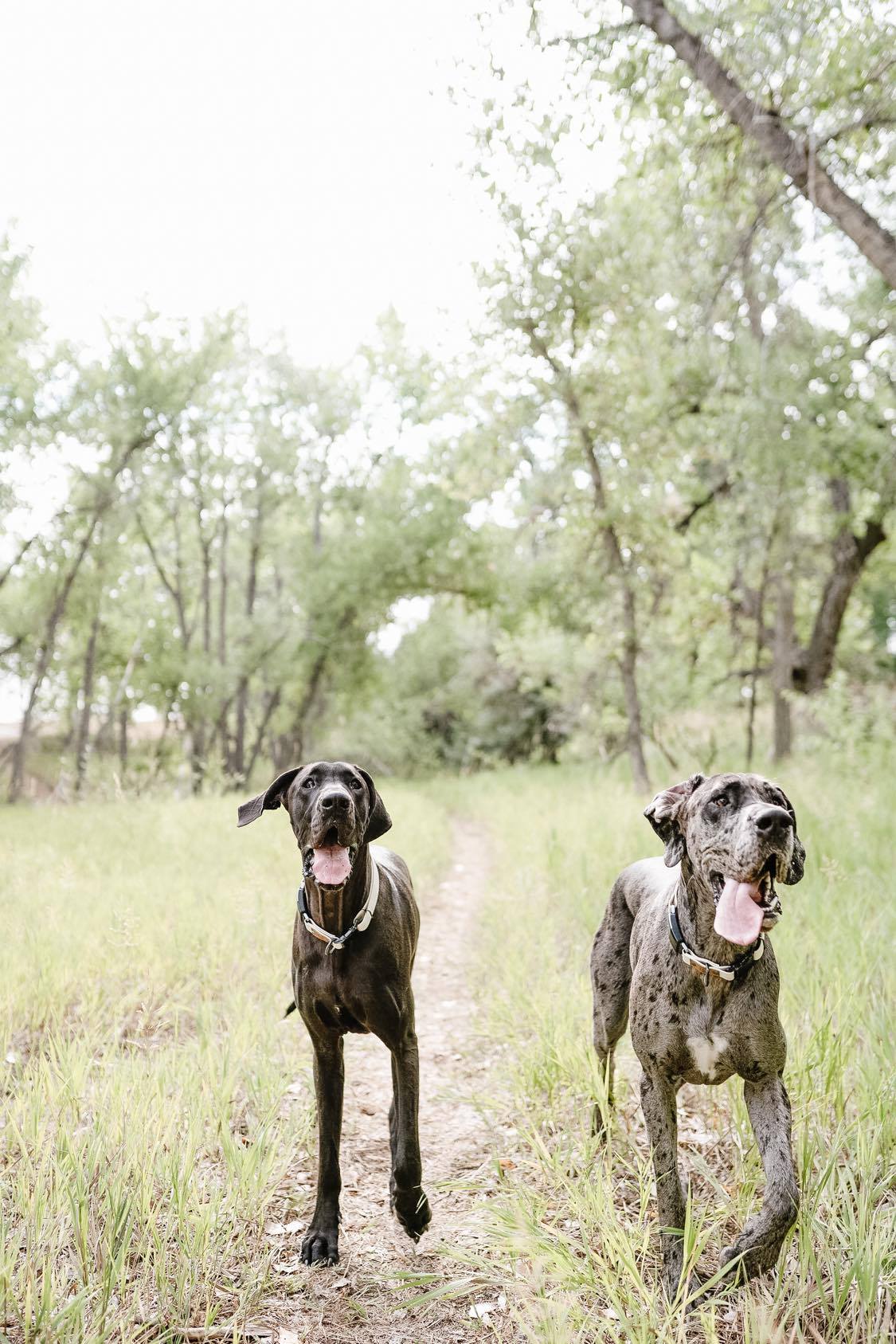
Puppies especially need your guidance here!
Do NOT let your Great Dane Puppy practice rude behavior and play signals, including staring, lunging, pestering, humping or jumping. Leave if you have to. Lower excitement levels. Advocate for your dog. Teach YES behaviors. Work with a highly qualified positive-balanced trainer.
For more information and resources on preventing fights, including the ones that may be triggered by rude or immature behavior, the book FIGHT by Jean Donaldson is a great resource.
Are Great Danes Vocal?
Great Danes may bark, growl and grumble. Most of the time, these things are not a sign of aggression!

ARE GREAT DANES AGGRESSIVE TOWARDS OTHER DOGS?
Aggression is serious, especially in Great Danes because they are so large and easily able to cause harm. Rude play behavior can escalate to aggression, quickly.
Great Danes are not supposed to be aggressive, however! If you are seeing aggression of any kind, chat with your breeder or rescue and seek out the help of a HIGHLY qualified behavior professional.
It is important to PREVENT aggression. If you are seeing your Great Dane aggressive towards other dogs, or if your dog is prone to aggressive behaviors, you must manage the environment.
Avoid situations where aggression tends to happen. Use crates, gates, leashes, and yes…muzzles as management tools.
There are not many Great Dane attack statistics that outline how often serious incidents have happened; however, many home insurance companies and landlords do not allow Great Danes for fear that they may contribute.
The Great Dane breed standard states that Great Danes should be friendly and courageous. Aggression towards humans or dogs is out of standard and not acceptable, nor is it normal in the breed.
SIGNS OF AGGRESSION IN GREAT DANES
Here are some signs that your Great Dane is being aggressive and is NOT playing. This is a dog that is likely unable to consistently and safely interact without intervention, behavior modification and management:
- Stiff body. This paired with ears forward or ears pinned indicate insecurity and fear or forward/aggressive posturing. Neither is good.
- Hackles. Watch this. It can be a little insecurity and not always a bad sign, but needs attention if you see it often or see it paired with other signs of aggression. Keep an eye on it.
- Stiff tail wags. A wagging tail is NOT always a good sign!
- Tucked tail, shaking, extreme fear (fear aggression, can lead to snaps and bites if you push it).
- Lunging and snarling, even if you think your dog has always been ‘good with other dogs’.
- Hovering over another dog and then snarling/snapping at their face or neck.
- Low growl, especially when not accompanied by the healthy play signals listed above.
- Showing Teeth. A grimace with panting (fear, anxiety, frustration) or baring teeth/lip lifting (look at my teeth! They are sharp, back off!) are all signs that the dog may be uncomfortable and is likely to escalate.
- Snapping is a serious warning.
- Biting. This one seems obvious, but if your dog goes beyond a snap and sinks a tooth in, that is serious and requires professional guidance. Do not pass Go, do not collect $200, do not ‘try again’ to see if things improve. Do not ‘socialize’ your dog and hope he doesn’t do it again.
If your Great Dane is showing signs of aggression, the dog park is not an appropriate place to be. You cannot ‘socialize’ your Great Dane by hoping that the aggression will go away with more exposure to other dogs, or by ‘correcting’ the behavior instead of addressing the root cause.
Find a legitimate, highly qualified dog positive-balanced trainer with Great Dane experience.
Are male Great Danes aggressive?
Some people believe that male Great Danes will be more aggressive than others. While some male Great Danes have problems with testosterone, a well-bred, properly trained and well-socialized male should not be aggressive.
As above, if you are having problems with your Great Dane, seek out the help of a positive reinforcement balanced dog trainer to help you. Neutering MAY be among their recommendations.

ARE GREAT DANES MEAN TO CHILDREN?
Well bred and thoughtfully socialized Great Danes make wonderful family pets. Temperament is largely genetic, so choosing the right breeder really matters when you want to bring a Great Dane into a home with children.
We highly recommend that breeders use Puppy Culture and expose puppies to children from a young age. Then, positive training and socialization must continue as soon as the puppy is in a new home.
Our Great Dane Puppy Socialization guide can help!
WHAT IF MY GREAT DANE IS SUDDENLY AGGRESSIVE?
Sudden aggression in Great Danes warrants a thorough health screening with a giant-breed experienced veterinarian. If you notice your Great Dane suddenly aggressive when they were always well-tempered before, health reasons are often to blame.
Some causes of sudden aggression in Great Danes may include problems with the heart or thyroid, diabetes, painful joints, wobblers, reflux, tooth pain, arthritis, ear infections, tumors or cancer, hormonal or chemical imbalance and/or pain of any kind.
Aggression can also be caused by improper, punitive and unfair training methods such as aggressive use of harsh shock collars, penny cans, alpha rolling, intimidation, choking, hitting and physical force.
Never use a cheap shock collar on a Great Dane, and steer clear of outdated intimidation-based training techniques.
Our dogs deserve better than this, especially when health problems are to blame for their behavior.
Rage syndrome in Great Danes can be another cause of sudden aggression. This is often referred to as ‘idopathic aggression’ and is a serious (but rare) behavioral problem that requires the help of a Veterinary Behaviorist. You can find a veterinary behaviorist HERE.
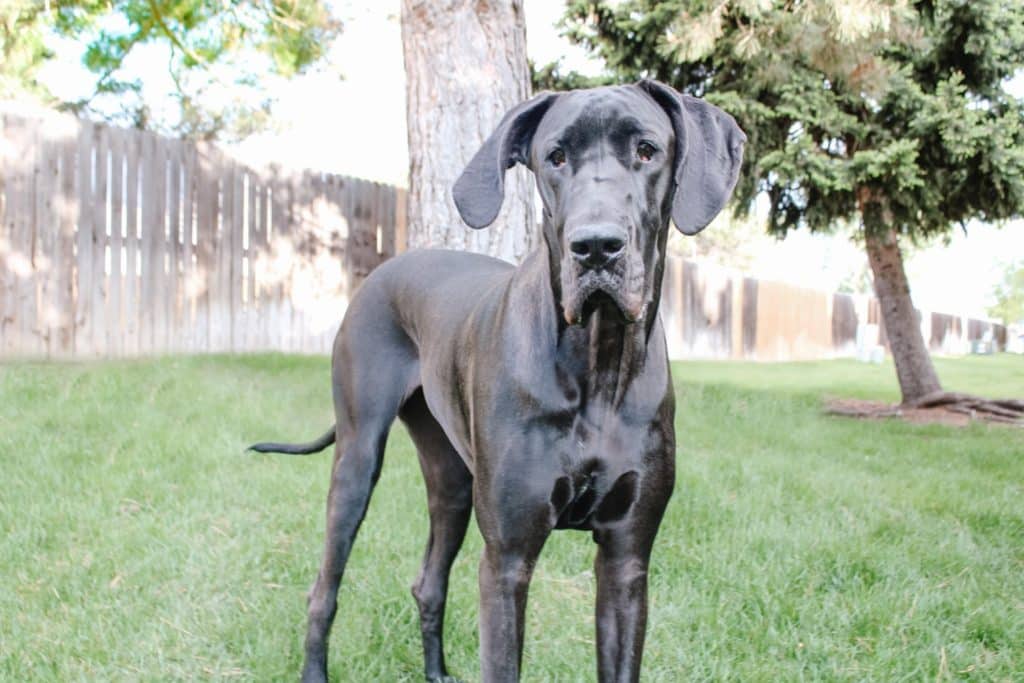
WILL NEUTERING STOP AGGRESSION?
Many people will tell you that neutering is the answer for addressing all forms of aggression.
There are times when neutering may help dogs that are amped up by their testosterone. Those dogs benefit from being neutered and owners may see a drastic reduction in rude behavior.
However, there is NO one-size-fits all answer here and neutering may do nothing at all to help the problem. In other words, you cannot ‘magically’ fix genetic-based poor temperaments, socialization and training issues with surgery.
While you definitely want to neuter a dog with behavioral problems (they should NEVER be bred and may benefit from the reduction in hormones), don’t expect miracles.
Neutering is NOT a reliable catch all for reducing aggressive and rude behavior; many neutered dogs will mark and continue to display aggression and rude ‘dominant’ behaviors.
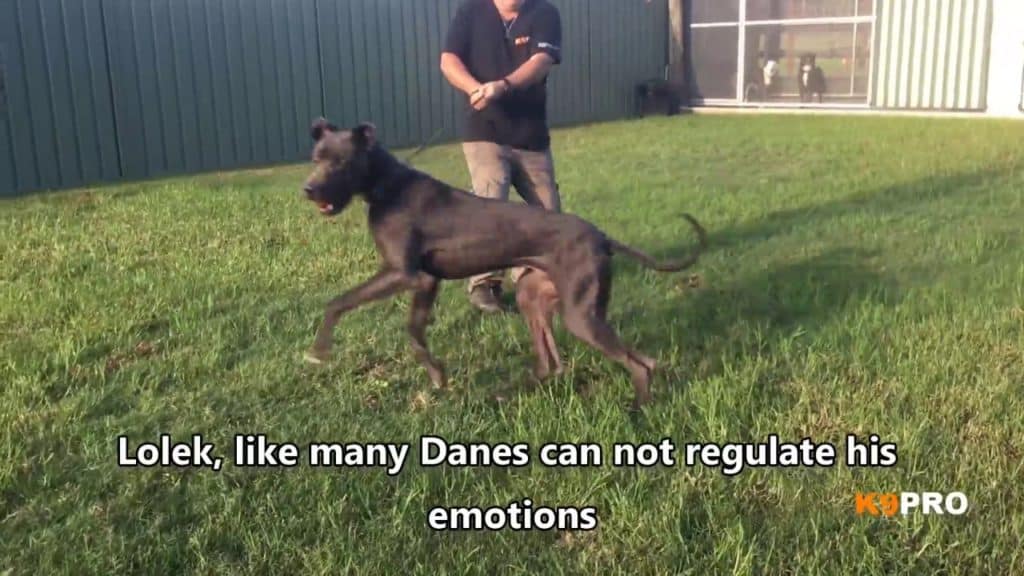
ADDITIONAL RESOURCES:
BAT 2.0 by Grisha Stewart for Reactive Dogs
MINE by Jean Donaldson
FIGHT by Jean Donaldson
HELPFUL CONTENT:
Dogs That Don’t Belong at the Dog Park
Bark Busters, Sit Means Sit and Off Leash K-9 Training Review
Reality Television and Dog Training

